Great Compact Discs: The Museum of Hype Stickers
Additional hype stickers, obis, inserts, download cards, and other packaging accoutrements scanned at high resolution for your... amusement? As with the title of this page, the use of these objects as the visual component of Rockissue is done with tongue firmly in cheek. Yes, many of these are great albums, and in some cases the specific C. D. reissues in question are great as well. But some of them are not.
Access larger, "TIFF" versions at the Internet Archive back-up location.
Alvarius B
Joan Baez
Harry Bertoia
Big Brother and the Holding Company
Sir Richard Bishop
Blondie
The Byrds
Caravan
Nick Cave
Cheap Trick
The Clash
Leonard Cohen
John Coltrane
The Congos
Elvis Costello
King Curtis
Miles Davis
Devo
Dinosaur Jr.
The Fat Boys
Ella Fitzgerald
The Flaming Lips
Flying Saucer Attack
Benny Goodman
Woody Guthrie
Charlie Haden
Hugh Hopper
Freddie Hubbard
Rick James
Keith Jarrett
Waylon Jennings
Janis Joplin
Carole King
The Kinks
Taj Mahal
The Meters
The Millennium
Charles Mingus
Thelonious Monk
Negativland
Willie Nelson
Roy Orbison
John Oswald
Lou Reed
Royal Trux
Arthur Russell
Santana
Frank Sinatra
Sly and the Family Stone
Patti Smith
Sonic Youth
Peter Tosh
Pete Townshend
The Who
Frank Zappa
~
Impulse Records reissues
Verve Master Edition reissues
Concord Music Group reissue series
Miscellaneous reissue series and compilations
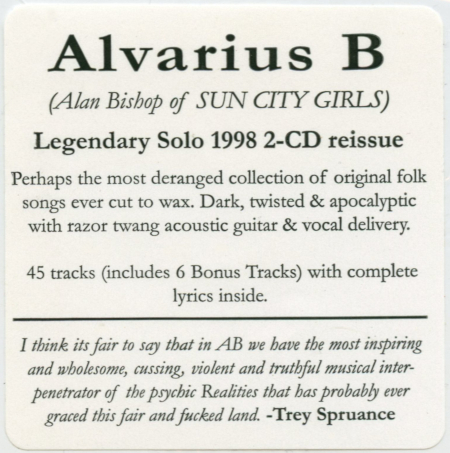
Alvarius B
Originally released 1998, reissued 2012 (Discogs) with six bonus tracks

Joan Baez
Originally released 1960, reissued 2001 (Discogs) with three bonus tracks

Joan Baez, Vol. 2
Originally released 1961, reissued 2001 (Discogs) with three bonus tracks

Joan Baez, In Concert
Originally released 1962, reissued 2002 (Discogs) with three bonus tracks

Joan Baez, In Concert Part 2
Originally released 1963, reissued 2002 (Discogs) with five bonus tracks

Joan Baez, 5
Originally released 1964, reissued 2002 (Discogs) with two bonus tracks

Joan Baez, Farewell, Angelina
Originally released 1965, reissued 2002 (Discogs) with three bonus tracks

Joan Baez, Noël
Originally released 1966, reissued 2001 (Discogs) with six bonus tracks

Joan Baez, Joan
Originally released 1967, reissued 2003 (Discogs) with two bonus tracks

Joan Baez, Baptism
Originally released 1968, reissued 2003 (Discogs) with three bonus tracks

Joan Baez, Andy Day Now
Originally released 1968, reissued 2005 (Discogs) with two bonus tracks

Joan Baez, David's Album
Originally released 1969, reissued 2005 (Discogs) with two bonus tracks

Joan Baez, One Day at a Time
Originally released 1970, reissued 2005 Discogs) with two bonus tracks

Joan Baez, Blessed Are...
Originally released 1971, reissued 2005 (Discogs) with one bonus track

Joan Baez, Carry It On
Originally released 1971, reissued 2007 (Discogs)
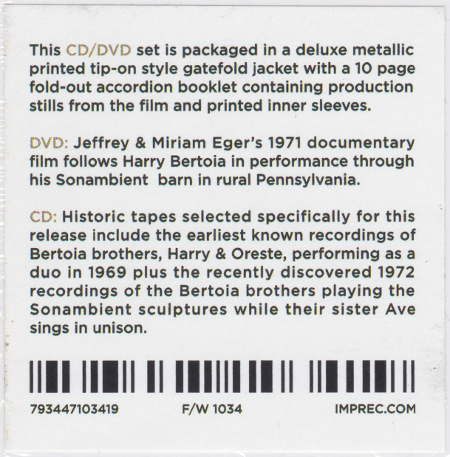
Harry Bertoia, Sonambients: The Sound Sculpture of Harry Bertoia
Released 2017 (Discgs)

Harry Bertoia, Clear Sounds/ Perfetta
Released 2016 (Discgs)

Harry Bertoia, Sonambient: Complete Collection
Released 2016 (Discogs)
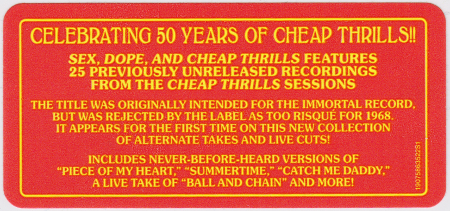
Big Brother and the Holding Company, Sex, Dope & Cheap Thrills
Released 2018 (Discogs)
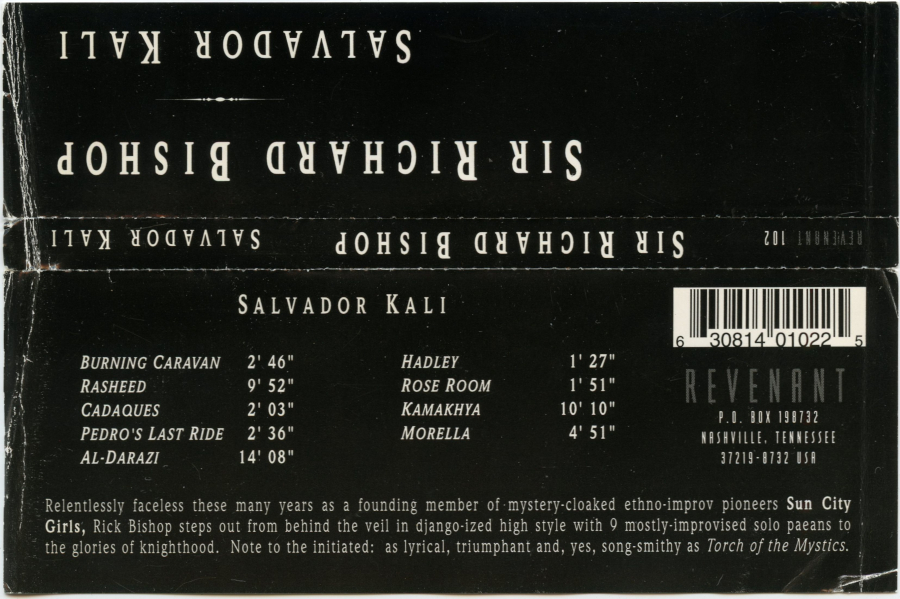
Sir Richard Bishop, Salvador Kali
Released 1998 (Discogs)
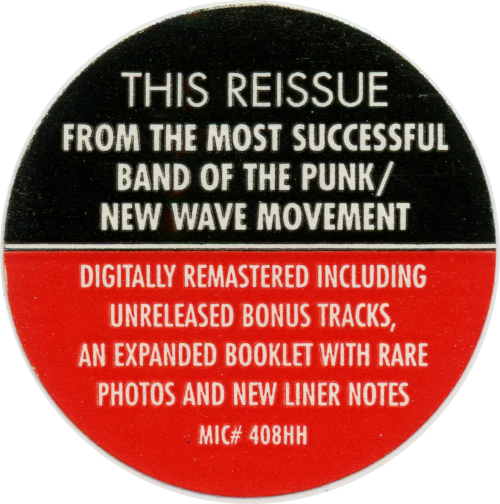
Blondie
Originally released 1976, reissued 2001 (Discogs) with five bonus tracks
Blondie, Plastic Letters
Originally released 1978, reissued 2001 (Discogs) with four bonus tracks
Blondie, Parallel Lines
Originally released 1978, reissued 2001 (Discogs) with four bonus tracks
Blondie, Eat to the Beat
Originally released 1979, reissued 2001 (Discogs) with four bonus tracks
Blondie, Autoamerican
Originally released 1980, reissued 2001 (Discogs) with three bonus tracks
Blondie, The Hunter
Originally released 1982, reissued 2001 (Discogs) with one bonus track
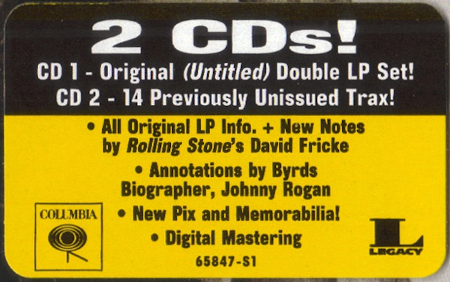
The Byrds, (Untitled)/(Unissued)
(Untitled) released 1970; this reissue, 2000 (Discogs) with 14 bonus tracks
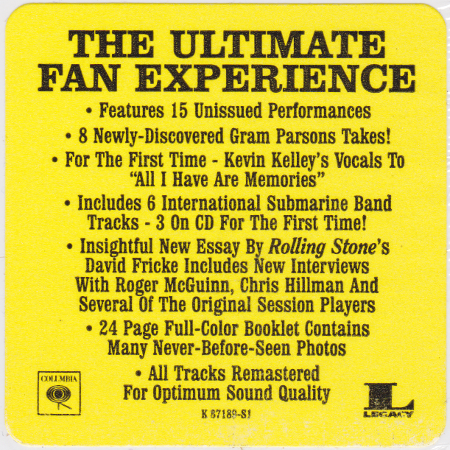
The Byrds, Sweetheart of the Rodeo
Originally released 1968, reissued 2003 (Discogs) with 28 bonus tracks
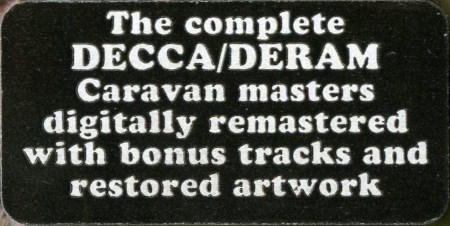
Caravan
Originally released 1969, reissued 2002 (Discogs) with three bonus tracks
Caravan, If I Could Do It All Over Again, I'd Do It All Over You
Originally released 1970, reissued 2001 (Discogs) with four bonus tracks
Caravan, In the Land of Grey and Pink
Originally released 1971, reissued 2001 (Discogs) with five bonus tracks
Caravan, Waterloo Lily
Originally released 1972, reissued 2001 (Discogs) with four bonus tracks
Caravan, For Girls Who Grow Plump in the Night
Originally released 1973, reissued 2001 (Discogs) with five bonus tracks
Caravan & The New Symphonia
Originally released 1974, reissued 2001 (Discogs) with four bonus tracks
Caravan, Cunning Stunts
Originally released 1975, reissued 2001 (Discogs) with four bonus tracks
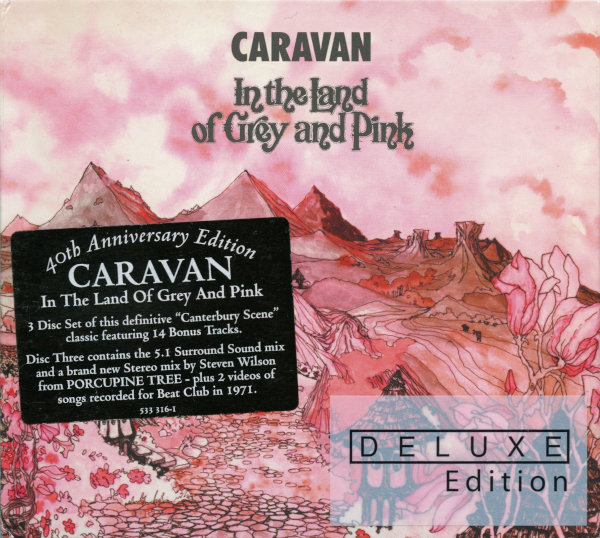
Caravan, In the Land of Grey and Pink
Originally released 1971, reissued 2011 (Discogs) with 14 bonus tracks and additional audiovisual material
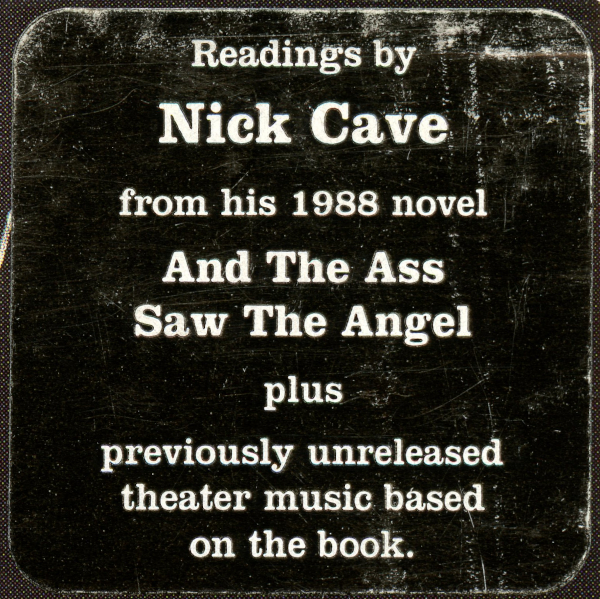
Nick Cave, Mick Harvey, and Ed Clayton-Jones, And the Ass Saw the Angel
Released 1998 (Discogs)

Grinderman, Grinderman
Released 2007 (Discogs)
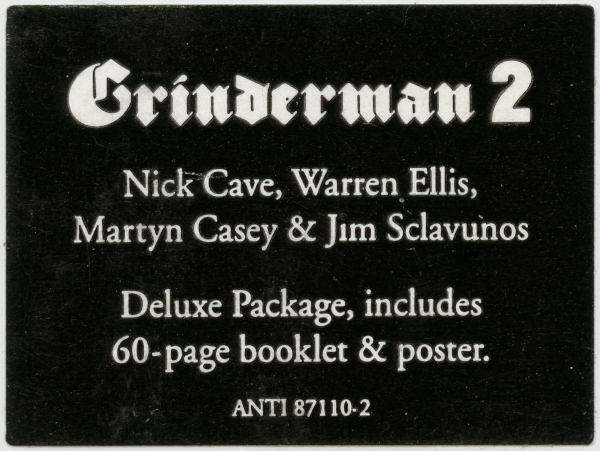
Grinderman, Grinderman 2
Released 2010 (Discogs)
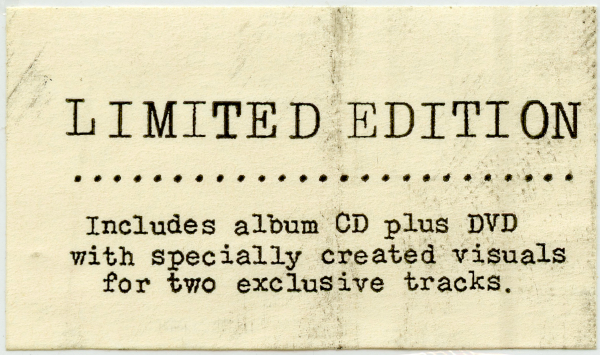
Nick Cave and the Bad Seeds, Push the Sky Away
Released 2013 (Discogs)
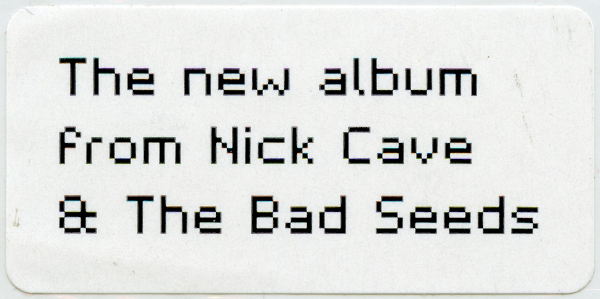
Nick Cave and the Bad Seeds, Skeleton Tree
Released 2016 (Discogs)
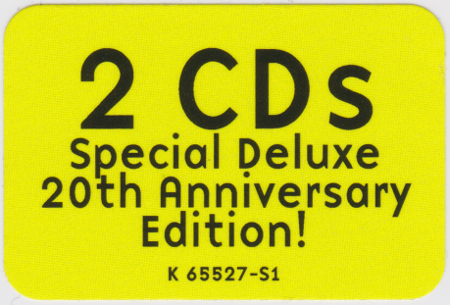
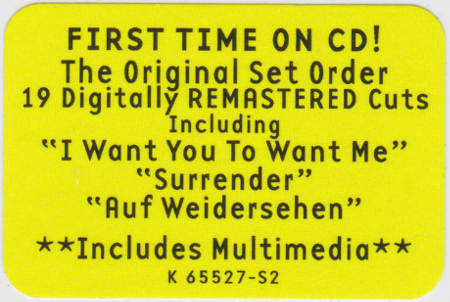
Cheap Trick, At Budokan: The Complete Concert
Released 1998 (Discogs)

The Clash, London Calling
Originally releasead 1979, reissued 2004 (Discogs) 21 bonus tracks and additional audiovisual material
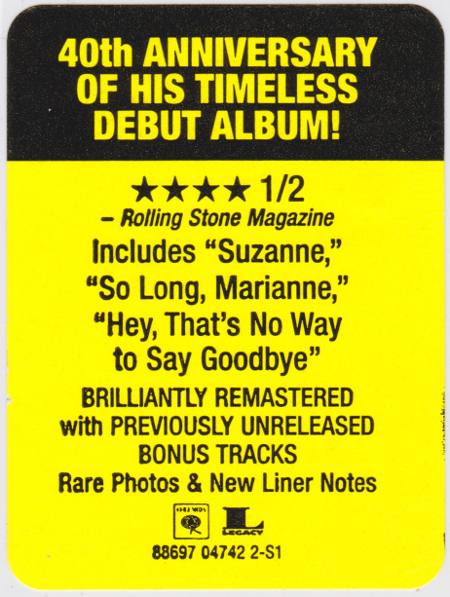
Leonard Cohen, Songs of Leonard Cohen
Originally released 1967, reissued 2007 (Discogs) with two bonus tracks
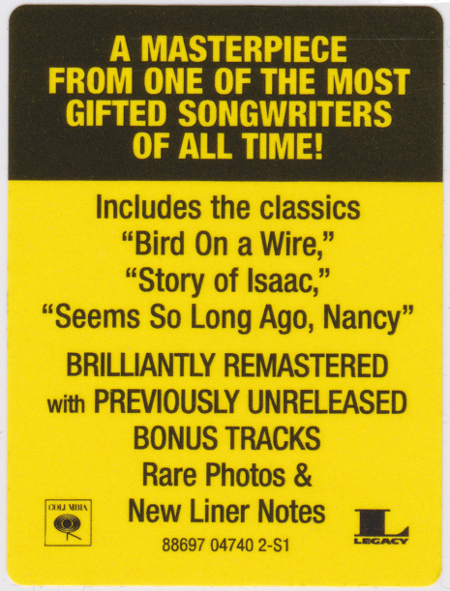
Leonard Cohen, Songs from a Room
Originally released 1969, reissued 2007 (Discogs) with two bonus tracks
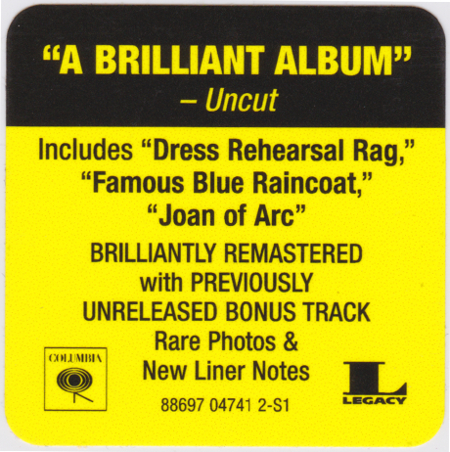
Leonard Cohen, Songs of Love and Hate
Originally released 1971, reissued 2007 (Discogs) with one bonus track

Leonard Cohen, Live at the Isle of Wight 1970
Released 2009 (Discogs)
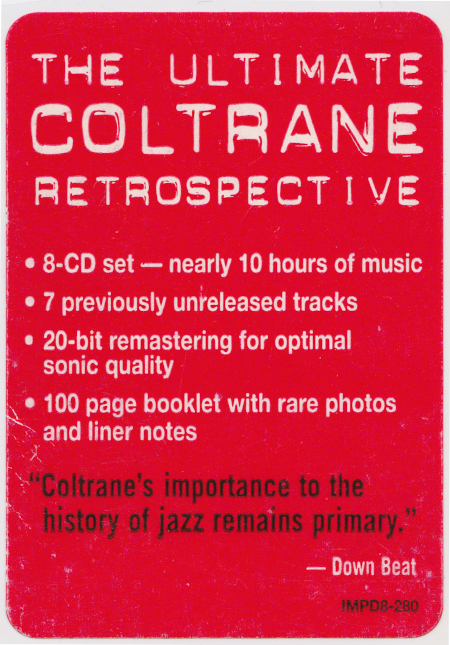
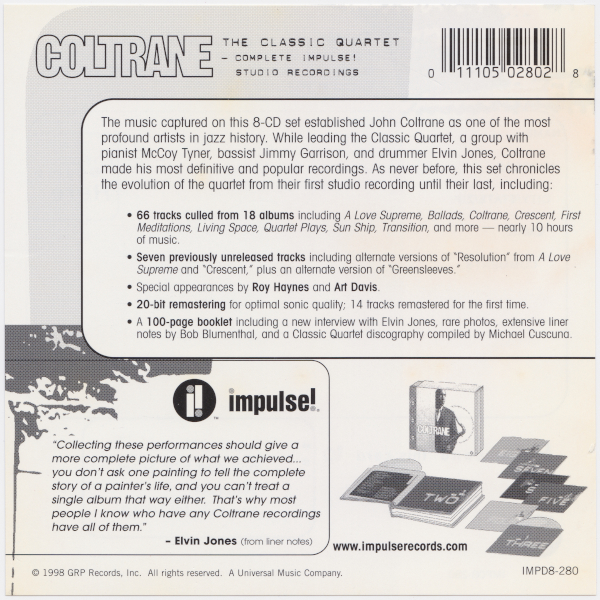
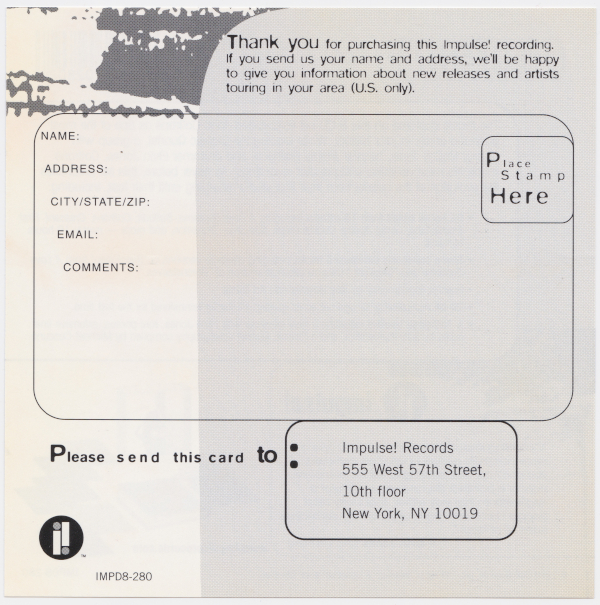
John Coltrane, The Classic Quartet — Complete Impulse! Studio Recordings
Released 1998 (Discogs)
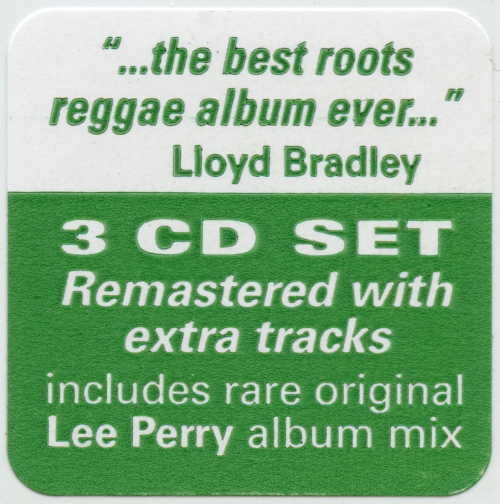
The Congos, Heart of the Congos
Originally released 1977, reissued 2017 (Discogs) with 20 bonus tracks
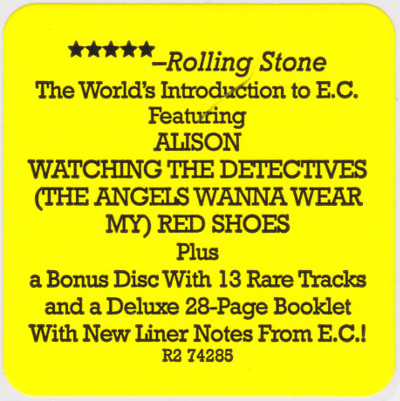
Elvis Costello, My Aim Is True
Originally released 2002, reissued 2001 (Discogs) with 14 bonus tracks
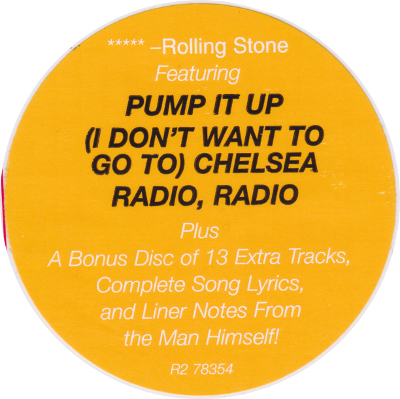
Elvis Costello, This Year's Model
Originally released 1978, reissued 2002 (Discogs) with 13 bonus tracks
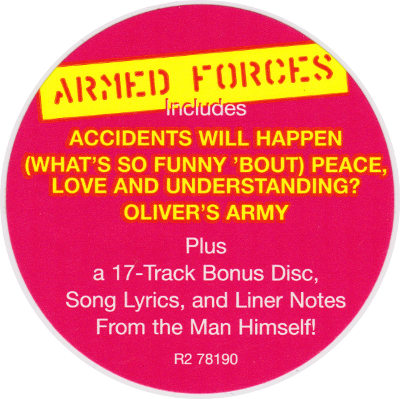
Elvis Costello and the Attractions, Armed Forces
Originally released 1979, reissued 2002 (Discogs) with 18 bonus tracks
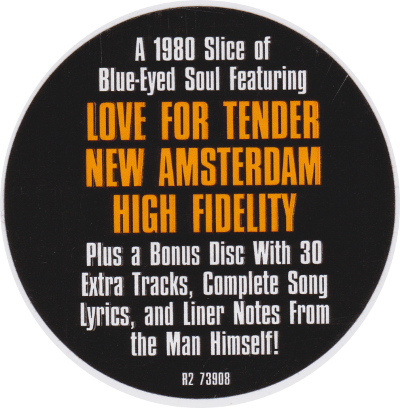
Elvis Costello and the Attractions, Get Happy!!
Originally released 1980, reissued 2003 (Discogs) with 30 bonus tracks
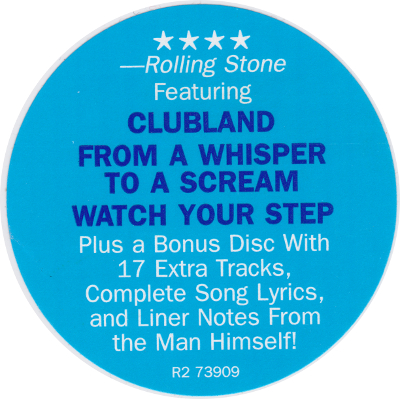
Elvis Costello and the Attractions, Trust
Originally released 1981, reissued 2003 (Discogs) with 17 bonus tracks
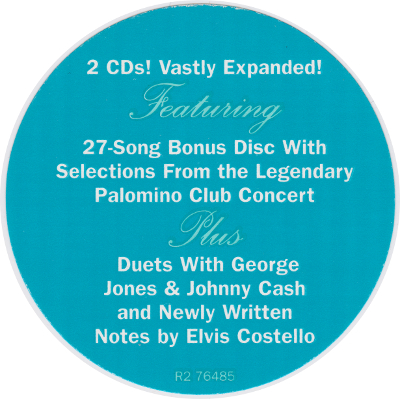
Elvis Costello and the Attractions, Almost Blue
Originally released 1981, reissued 2004 (Discogs) with 27 bonus tracks
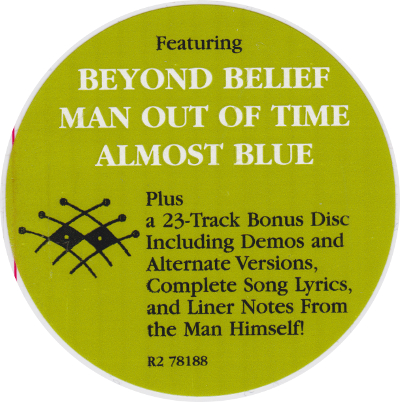
Elvis Costello and the Attractions, Imperial Bedroom
Originally released 1982, reissued 2002 (Discogs) with 23 bonus tracks

Elvis Costello and the Attractions, Punch the Clock
Originally released 1983, reissued 2003 (Discogs) with 26 bonus tracks

King Curtis and His Orchestra, Azure
Originally released 1960, reissued 2007 (Discogs) with 2 bonus tracks
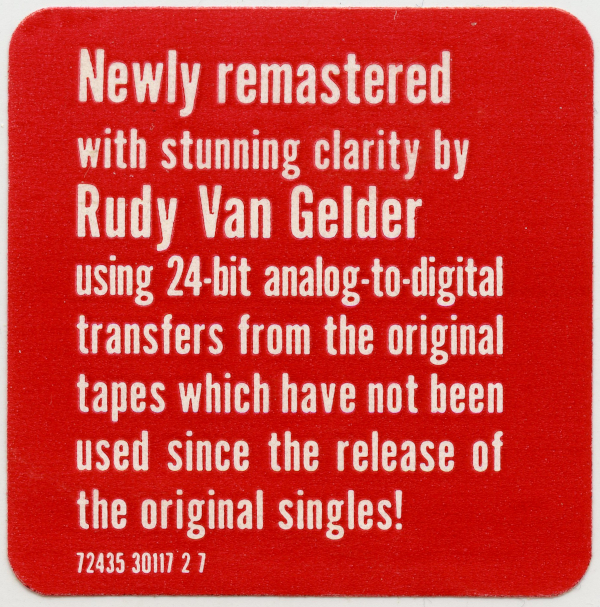
Miles Davis, Birth of the Cool
Released 1957 (compiling tracks originally released 1949-1950), reissued 2001 (Discogs)
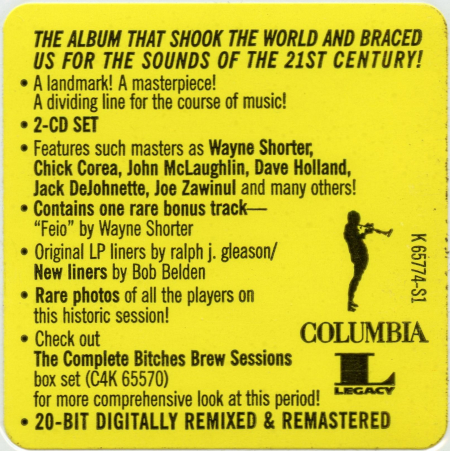
Miles Davis, Bitches Brew
Originally released 1970, reissued 1999 (Discogs) with one bonus track
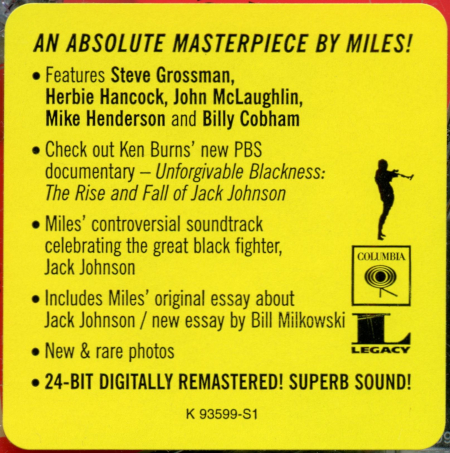
Miles Davis, Tribute to Jack Johnson
Originally released 1971, reissued 2005 (Discogs)
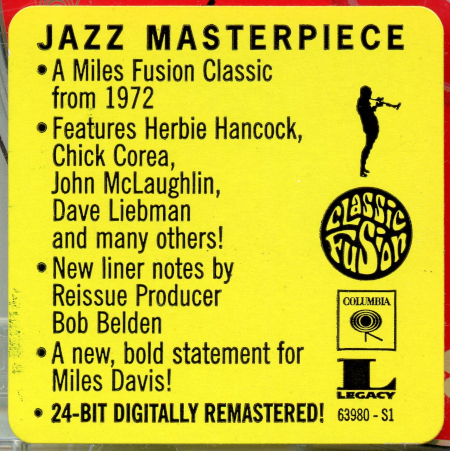
Miles Davis, On the Corner
Originally released 1972, reissued 2001 (Discogs)
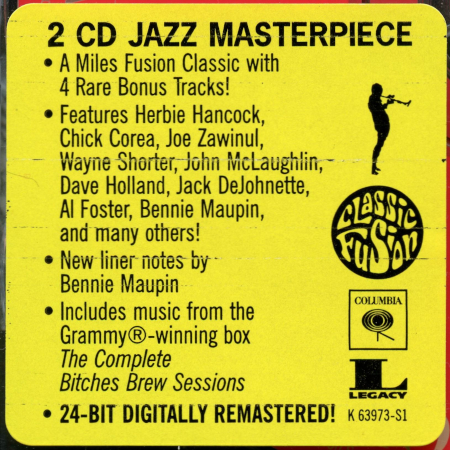
Miles Davis, Big Fun
Originally released 1974, reissued 2000 (Discogs with four bonus tracks)
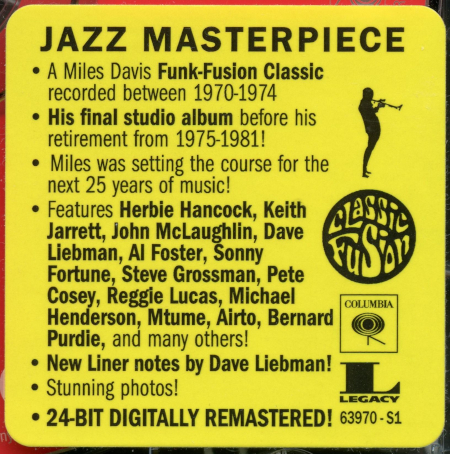
Miles Davis, Get Up with It
Originally released 1974, reissued 2000 (Discogs)

Devo, Q: Are We Not Devo? A: We Are Devo!
Originally released 1978, reissued 2009 (Discogs)
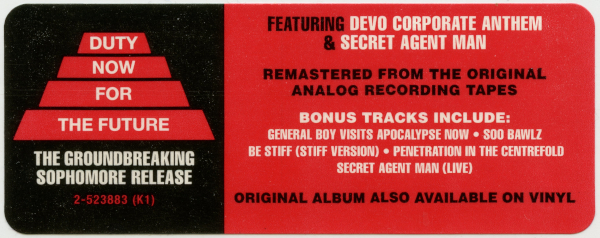
Devo, Duty Now for the Future
Originally released 1979, reissued 2010 (Discogs)

Devo, Freedom of Choice
Originally released 1980, reissued 2009 (Discogs)
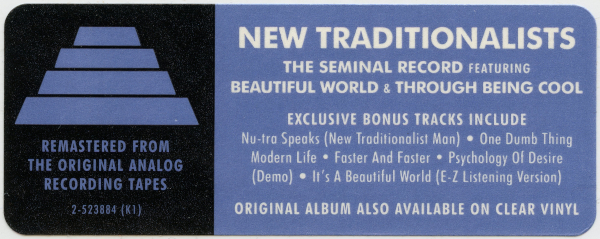
Devo, New Traditionalists
Originally released 1981, reissued 2010 (Discogs)
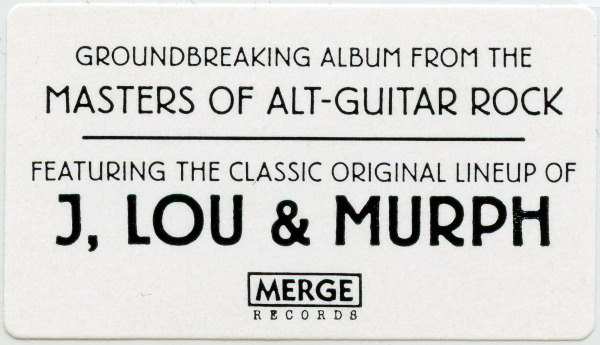
Dinosaur Jr., Dinosaur
Originally released 1985, reissued 2005 (Discogs)
Dinosaur Jr., You're Living all over Me
Originally released 1987, reissued 2005 (Discogs)
Dinosaur Jr., Bug
Originally released 1988, reissued 2005 (Discogs)
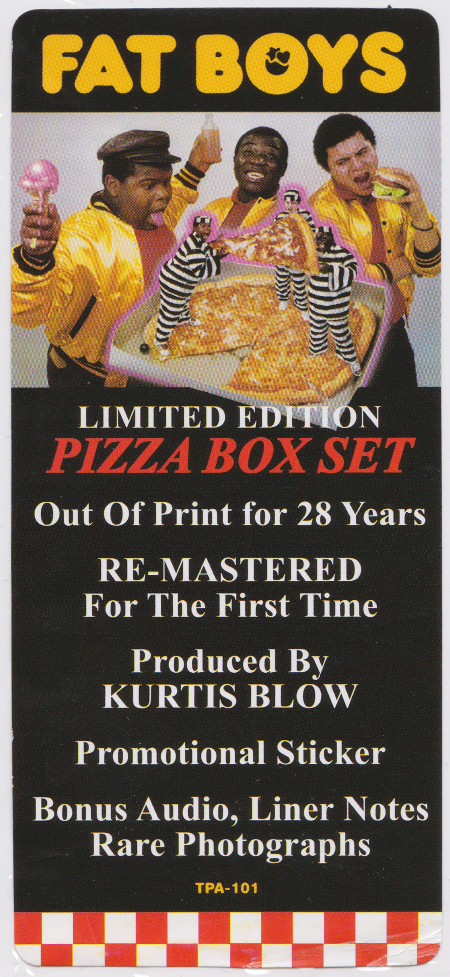
The Fat Boys
Originally released 1984, reissued 2012 (Discogs) with eight bonus tracks

Ella Fitzgerald Sings the Rodgers and Hart Song Book
Originally released 1956, reissued 1997 (Discogs) with one bonus track

Ella Fitzgerald Sings the Cole Porter Song Book
Originally released 1956, reissued 1997 (Discogs) with three bonus tracks
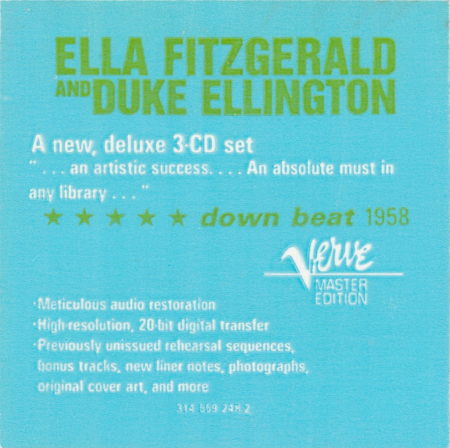
Ella Fitzgerald Sings the Duke Ellington Song Book
Originally released 1957, reissued 1999 (Discogs) with 12 bonus tracks

Ella Fitzgerald Sings the Irving Berlin Song Book
Originally released 1958, reissued 2000 (Discogs) with one bonus track
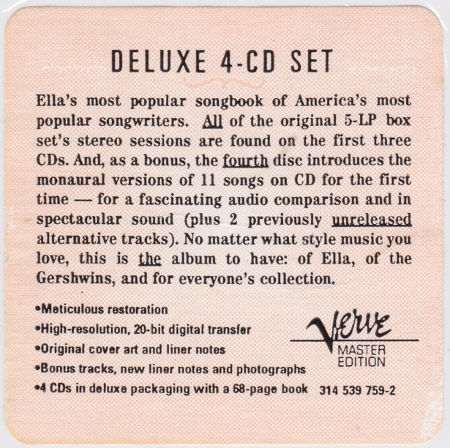
Ella Fitzgerald Sings the George and Ira Gershwin Song Book
Originally released 1959, reissued 1998 Discogs) with 18 bonus tracks

Ella Fitzgerald, The Complete Ella in Berlin: Mack the Knife
Originally released 1960, reissued 1993 Discogs) with 10 bonus tracks

Ella Fitzgerald Sings the Harold Arlen Song Book
Originally released 1961, reissued 2001 Discogs) with bonus tracks
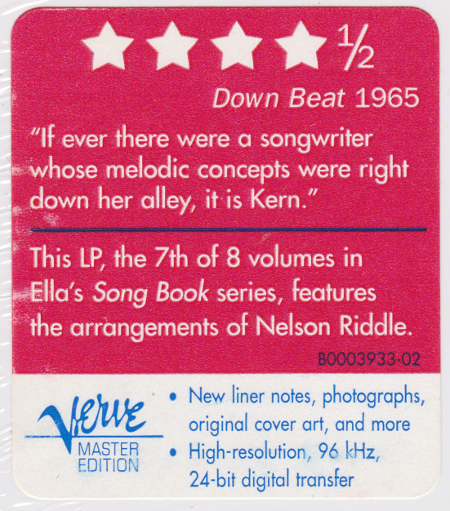
Ella Fizgerald Sings the Jerome Kern Song Book
Originally released 1963, reissued 2005 (Discogs)

Ella Fizgerald Sings the Johnny Mercer Song Book
Originally released 1964, reissued 1997 (Discogs)
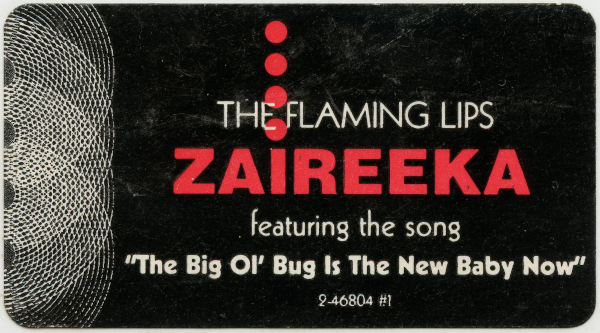
The Flaming Lips, Zaireeka
Released 1997 (Discogs)
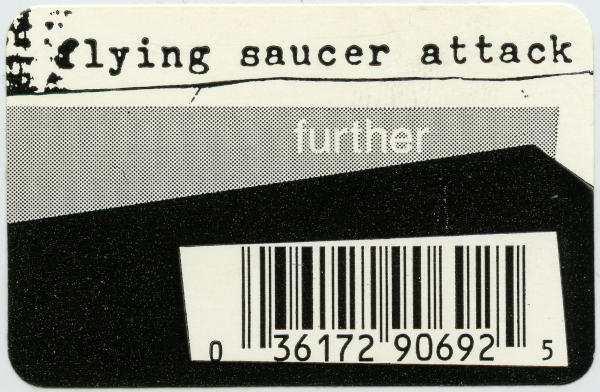
Flying Saucer Attack, Further
Released 1997 (Discogs)
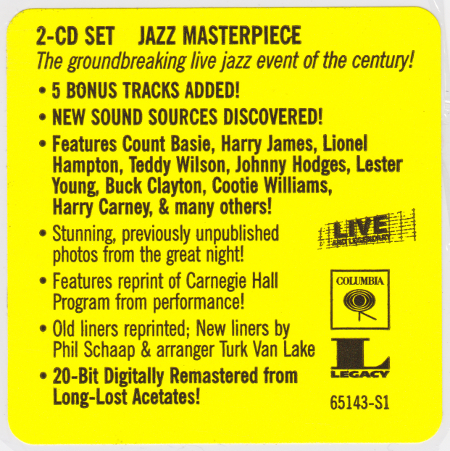
Benny Goodman, The Famous 1938 Carnegie Hall Jazz Concert
Originally released 1950, reissued 1999 (Discogs) with additional material from the concert and otherwise
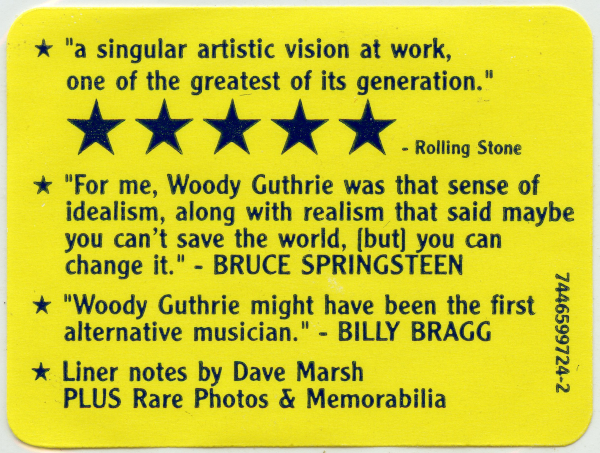
Woody Guthrie, Dust Bowl Ballads
Reissue of 1940 E. P.s first released 1964, this reissue, 2000 (Discogs)
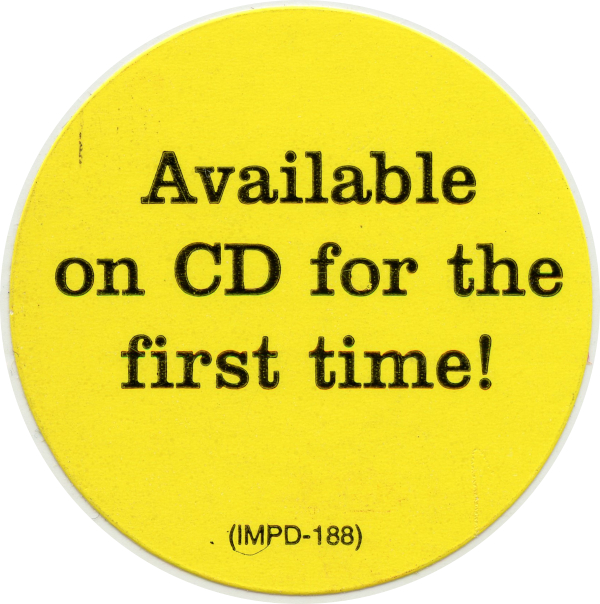
Charlie Haden, Liberation Music Orchestra
Originally released 1970, reissued 1996 (Discogs)
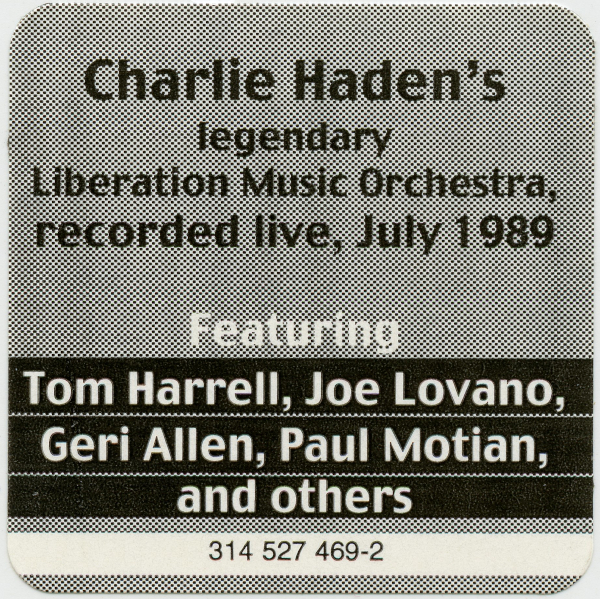
Charlie Haden/ Liberation Music Orchestra, The Montreal Tapes
Released 1999 (Discogs)
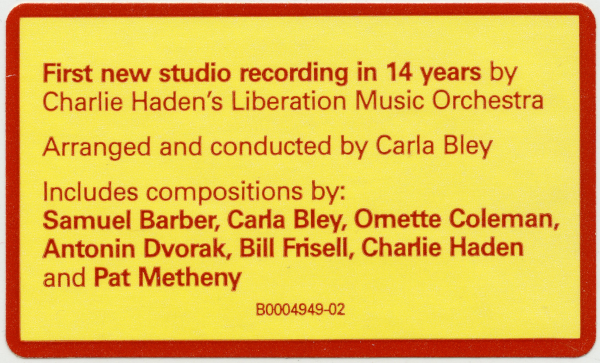
Charlie Haden/ Liberation Music Orchestra, Not in Our Name
Released 2005 (Discogs)
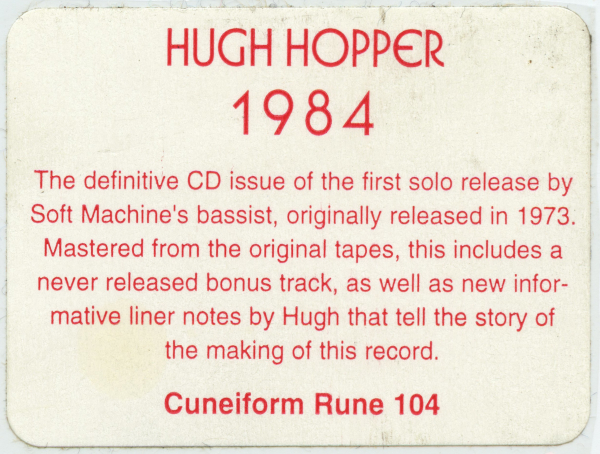
Hugh Hopper, 1984
Originally released 1973, reissued 1998 (Discogs)
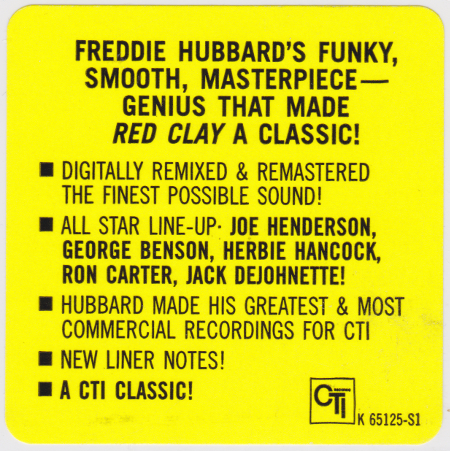
Freddie Hubbard, Straight Life
Originally released 1970, reissued 1997 (Discogs)
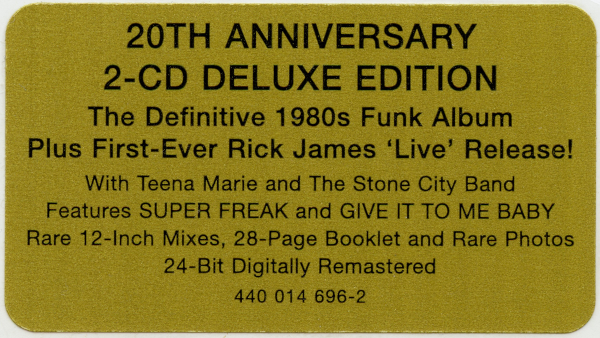
Rick James, Street Songs
Originally released 1981, reissued 2001 (Discogs)

Keith Jarrett/ Gary Peacock/ Jack DeJohnette, Bye Bye Blackbird
Released 1993 (Discogs)
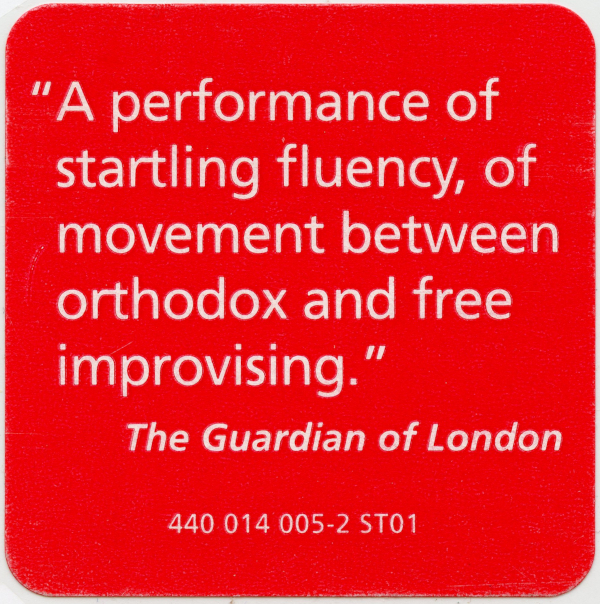
Keith Jarrett/ Gary Peacock/ Jack DeJohnette, Inside Out
Released 2001 (Discogs)

Waylon Jennings, Honky Tonk Heroes
Originally released 1973, reissued 1999 Discogs) with two bonus tracks
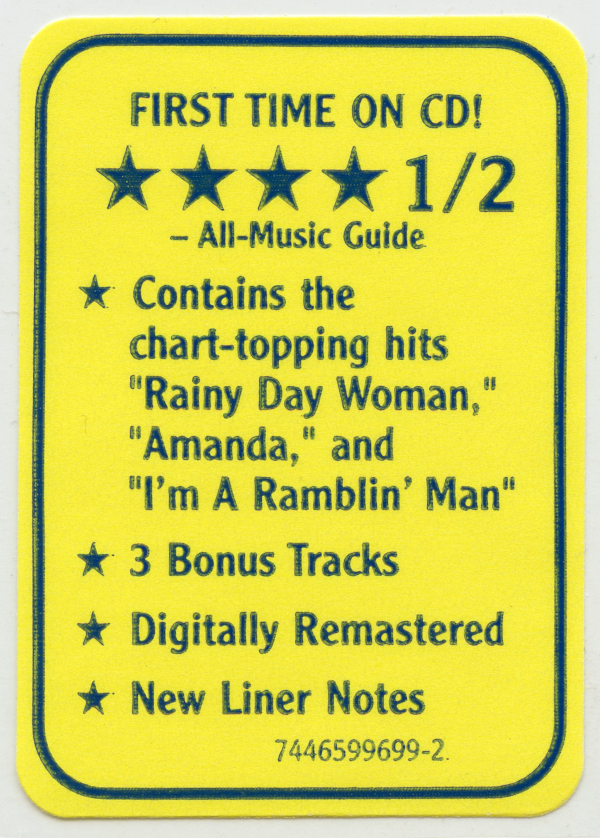
Waylon Jennings, The Ramblin' Man
Originally released 1974, reissued 2000 (Discogs) with three bonus tracks
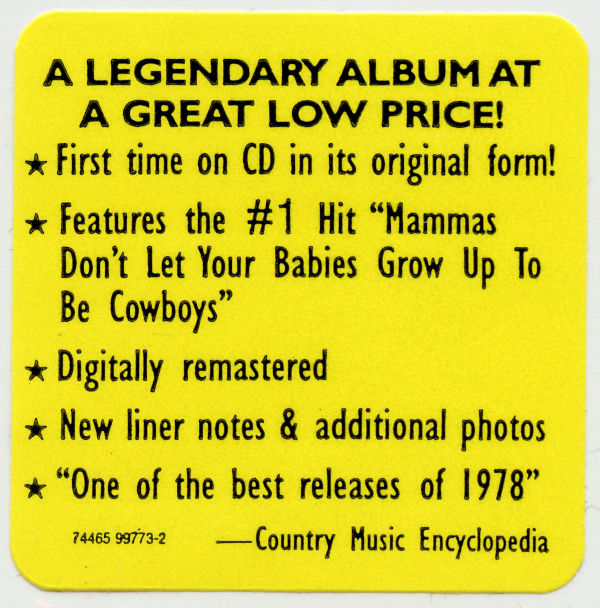
Waylon Jennings/ Willie Nelson, Waylon & Willie
Originally released 1978, reissued 2000 (Discogs)

Waylon Jennings/ Willie Nelson, WWII
Originally released 1982, reissued 2000 (Discogs)
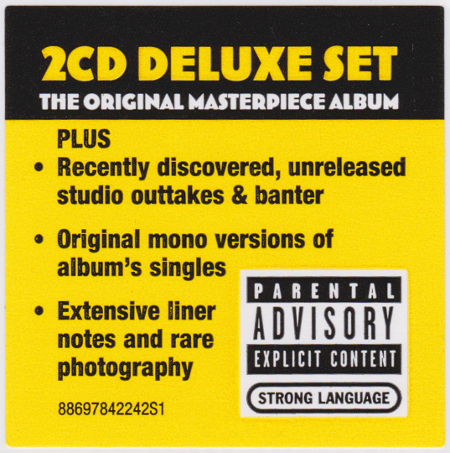
Janis Joplin/ Full Tilt Boogie, Pearl
Originally released 1970, reissued 2012 as The Pearl Sessions (Discogs) with 26 bonus tracks
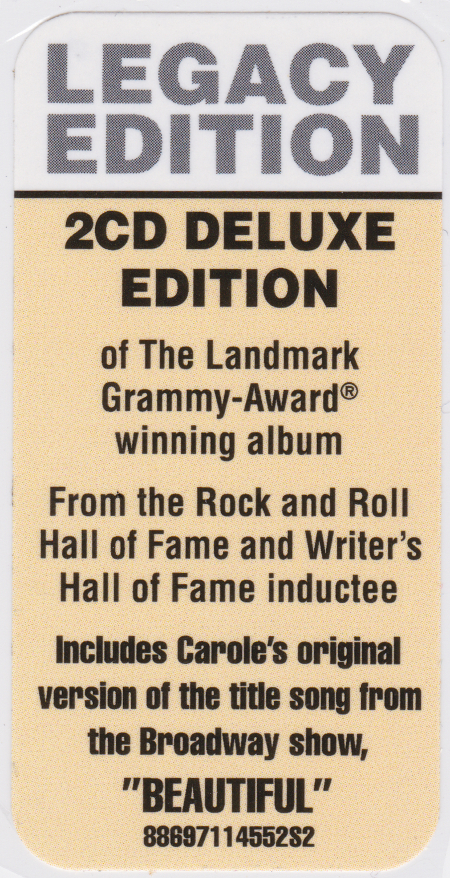
Carole King, Tapestry
Originally released 1971, reissued 2008 (Discogs) with 11 bonus tracks
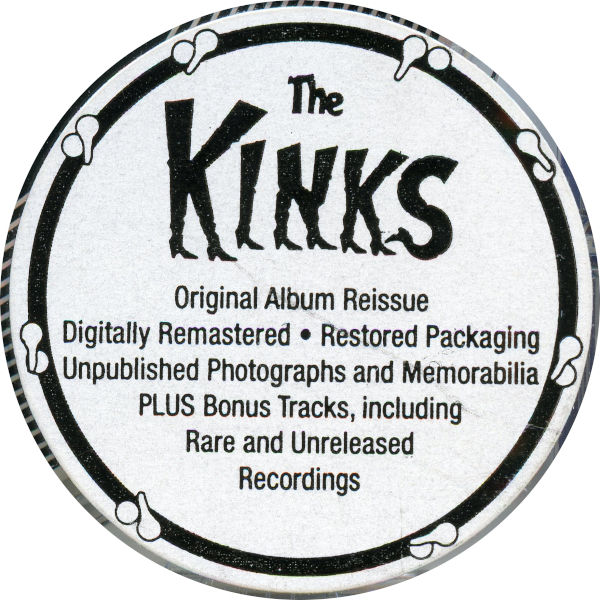
The Kinks, The Kinks
Originally released 1964, reissued 1998 (Discogs) with 12 bonus tracks
The Kinks, Kinkda Kinks
Originally released 1965, reissued 1998 (Discogs) with 11 bonus tracks
The Kinks, The Kink Kontroversy
Originally released 1965, reissued 1998 (Discogs) with four bonus tracks
The Kinks, Face to Face
Originally released 1966, reissued 1998 (Discogs) with seven bonus tracks
The Kinks, Live at Kelvin Hall
Originally released 1967, reissued 1998 (Discogs) with nine bonus tracks
The Kinks, Something Else by the Kinks
Originally released 1967, reissued 1998 (Discogs) with eight bonus tracks
The Kinks, The Kinks Are the Village Green Preservation Society
Originally released 1968, reissued 1998 (Discogs) with 13 bonus tracks
The Kinks, Arthur or The Decline and Fall of the British Empire
Originally released 1969, reissued 1998 (Discogs) with 10 bonus tracks
The Kinks, Lola Versus Powerman and the Moneygoround Part 1
Originally released 1970, reissued 1998 (Discogs) with three bonus tracks
The Kinks, Percy
Originally released 1971, reissued 1998 (Discogs) with five bonus tracks


Taj Mahal, The Hidden Treasures of Taj Mahal 1969-1973
Released 2012 (Discogs)

The Meters, The Meters
Originally released 1969, reissued 1999 (Discogs) with two bonus tracks
The Meters, Look-Ka Py Py
Originally released 1970, reissued 1999 (Discogs) with two bonus tracks
The Meters, Struttin'
Originally released 1970, reissued 1999 (Discogs) with two bonus tracks
The Meters, Cabbage Alley
Originally released 1972, reissued 2000 (Discogs) with two bonus tracks
The Meters, Rejuvenation
Originally released 1974, reissued 2000 (Discogs) with two bonus tracks
The Meters, Fire on the Bayou
Originally released 1975, reissued 2000 (Discogs) with one bonus track
The Meters, Trick Bag
Originally released 1976, reissued 2000 (Discogs)
The Meters, New Directions
Originally released 1969, reissued 2000 (Discogs)
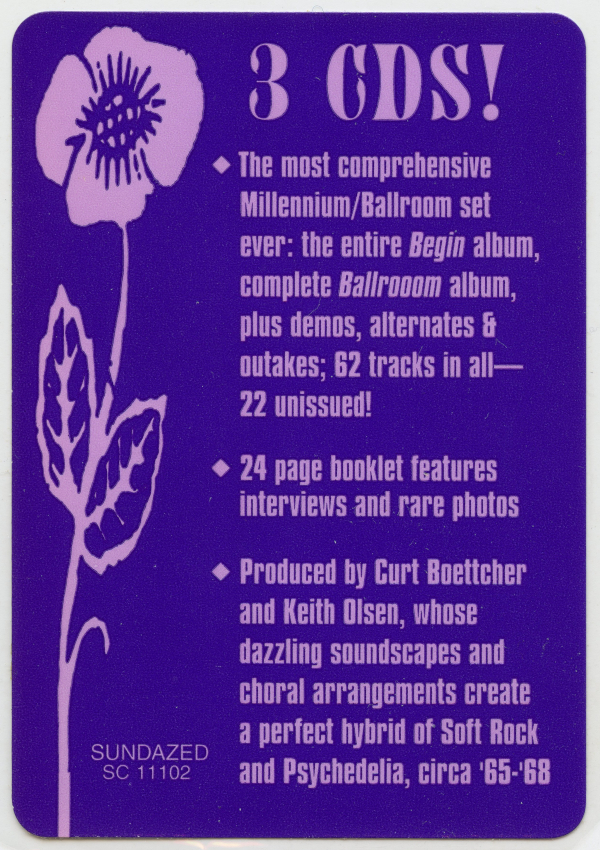
The Millennium, Magic Time: The Millennium/Ballroom Recordings
Released 2001 (Discogs)
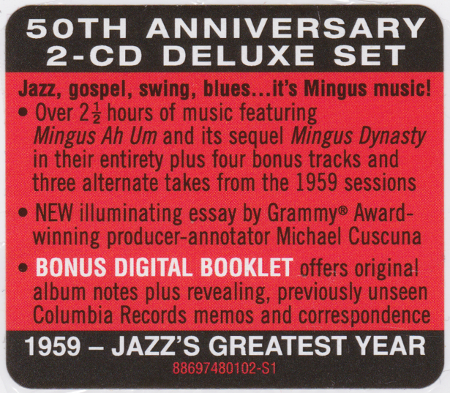
Charles Mingus, Mingus Ah Um
Originally released 1959, reissued 2009 (Discogs), including Mingus Dynasty, originally released 1960, and seven bonus tracks
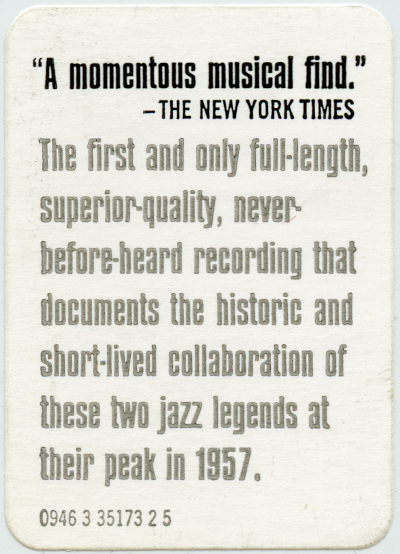
Thelonious Monk Quartet with John Coltrane, At Carnegie Hall
Released 2005 (Discogs)
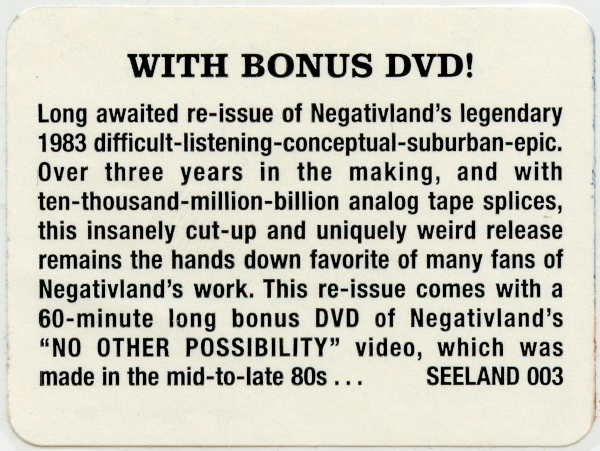
Negativland, A Big 10-8 Place
Originally released 1983, reissued 2007 with bonus D. V. D., No Other Possibility (Discogs)
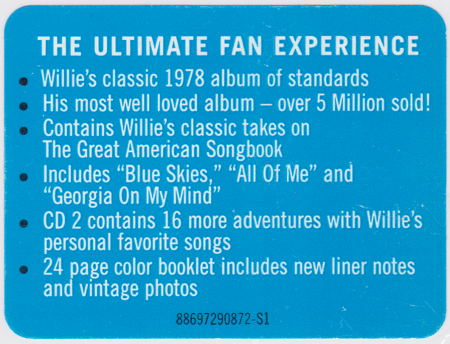
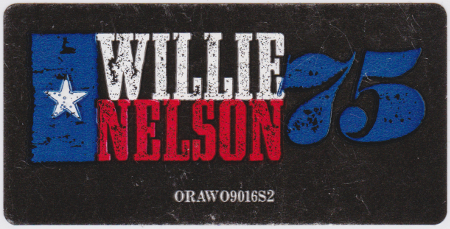
Willie Nelson, Stardust
Originally released 1978, reissued 2008 (Discogs) with 16 bonus tracks
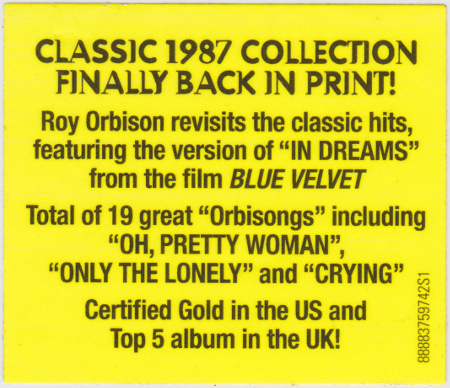
Roy Orbison, In Dreams: Greatest Hits
Originally released 1987, reissued 1996
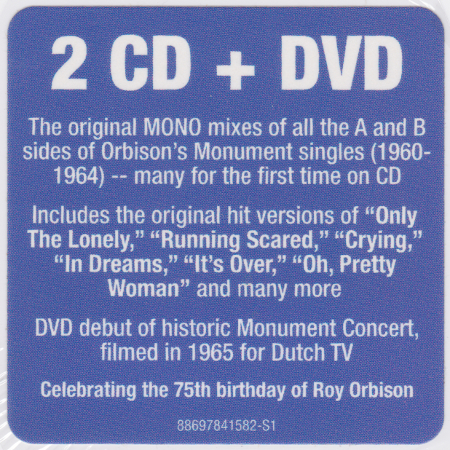
Roy Orbison, The Monument Singles Collection (1960-1964)
Released 2011 (Discogs)
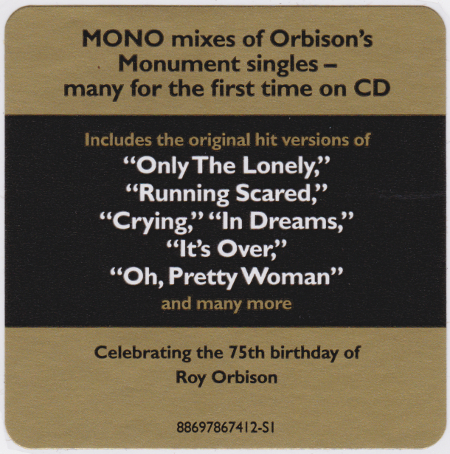
Roy Orbison, The Monument Singles - A-Sides (1960-1964)
Released 2011 (Discogs)
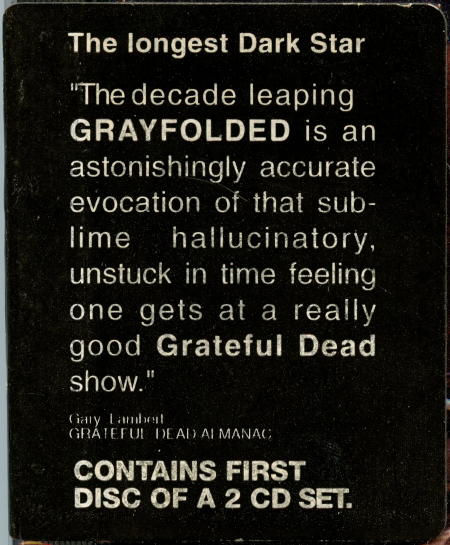

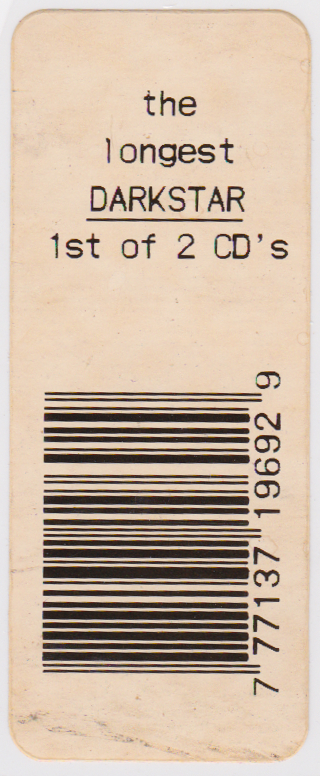
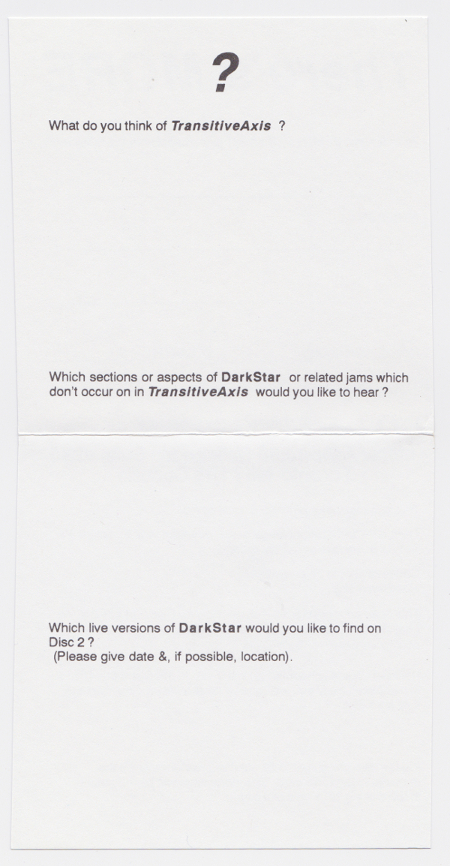
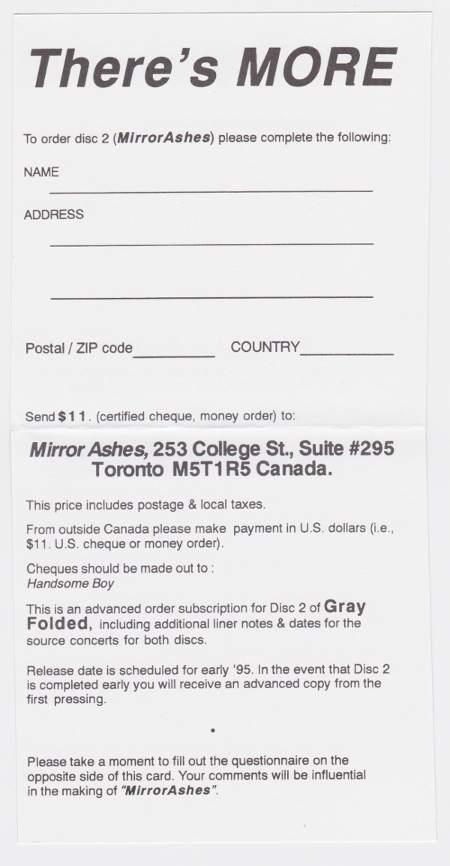
John Oswald, Grayfolded [single-disc version; two pressings]
Released 1994 (Discogs)
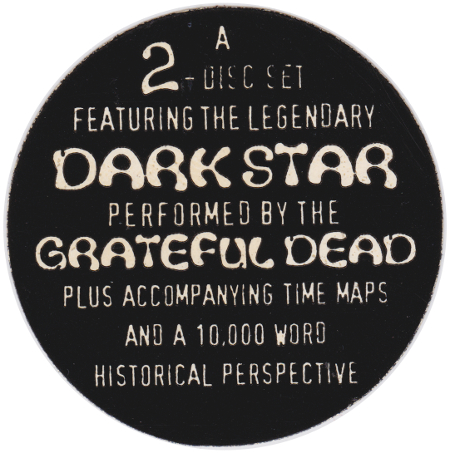
John Oswald, Grayfolded [double-disc version]
Released 1996 (Discogs)
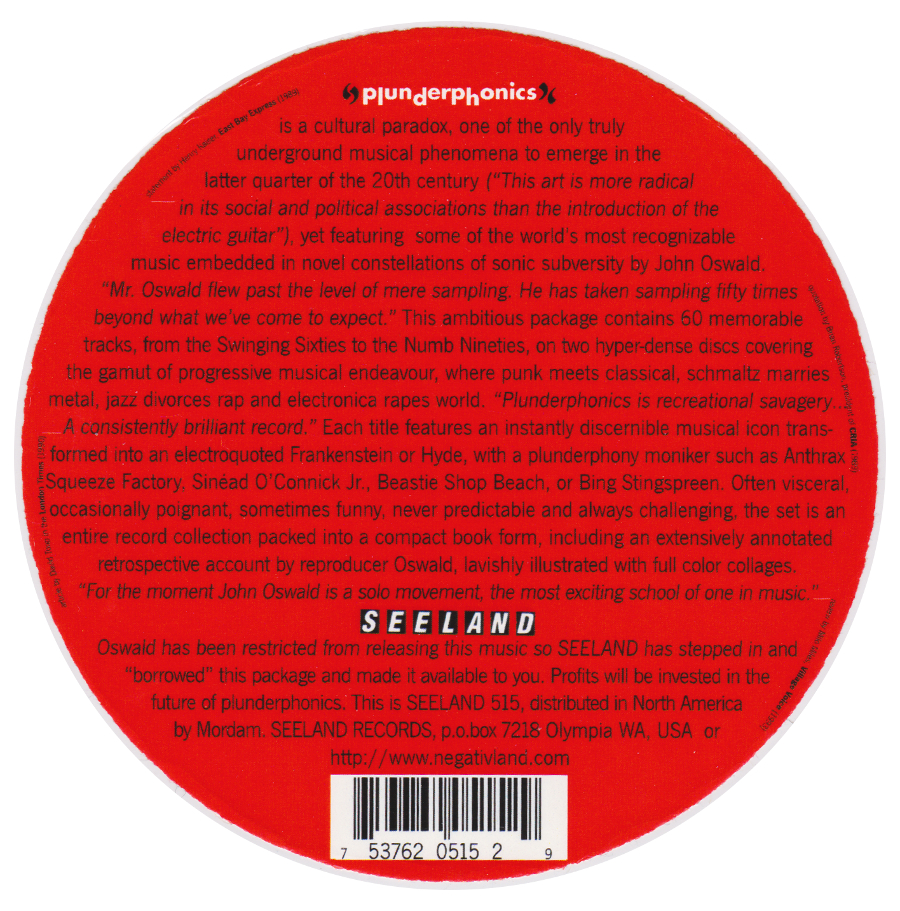
John Oswald, Plunderphonics 69 96
Released 2001 (Discogs)

Lou Reed, Coney Island Baby
Originally released 1976, reissued 2006 (Discogs) with six bonus tracks

Royal Trux, Singles, Live, Unreleased
Released 1997 (Discogs)
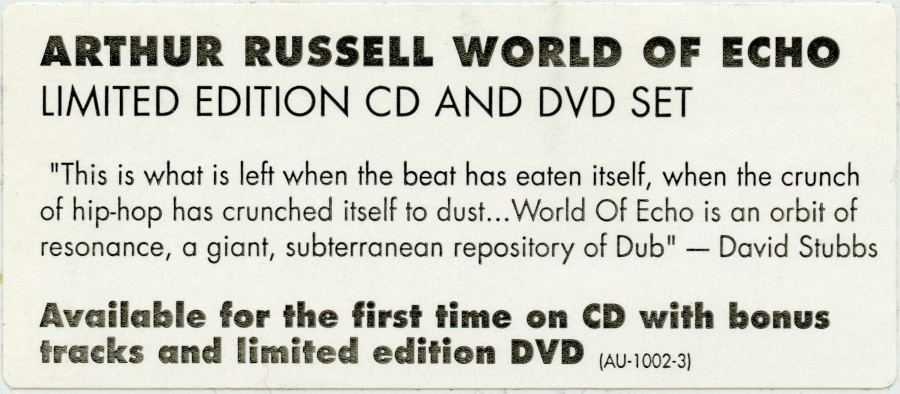
Arthur Russell, World of Echo
Originally released 1986, reissued 2004 (Discogs) with four bonus tracks and a bonus D. V. D. of audiovideo material
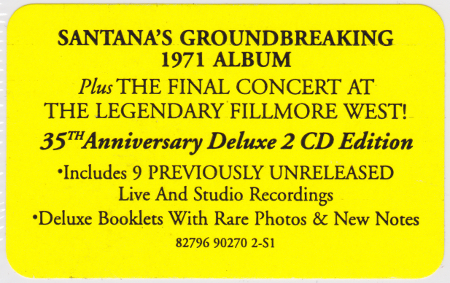
Santana III
Originally released 1971, reissued 2006 (Discogs) with 15 bonus tracks
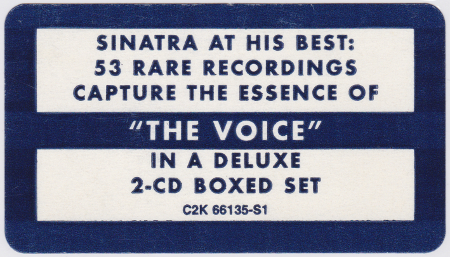
Frank Sinatra, The V-Discs
Released 1998 (Discogs)
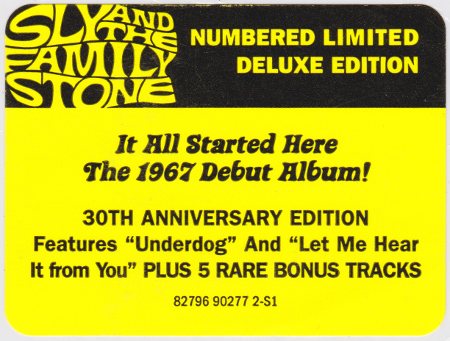
Sly and the Family Stone, A Whole New Thing
Originally released 1967, reissued 2007 (Discogs) with five bonus tracks
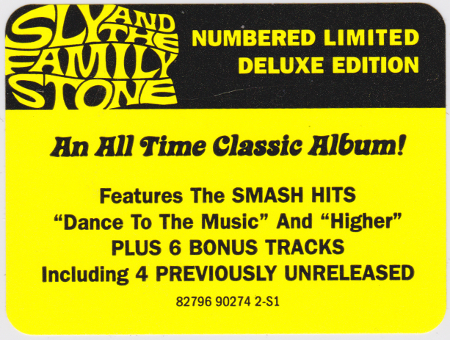
Sly and the Family Stone, Dance to the Music
Originally released 1968, reissued 2007 (Discogs) with six bonus tracks
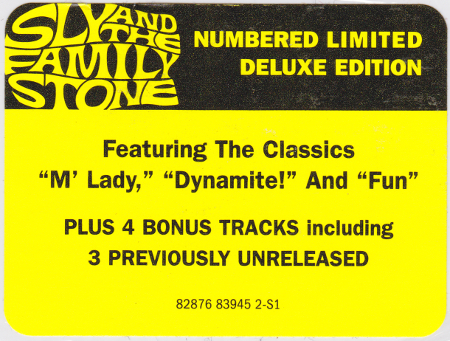
Sly and the Family Stone, Life
Originally released 1968, reissued 2007 (Discogs) with four bonus tracks
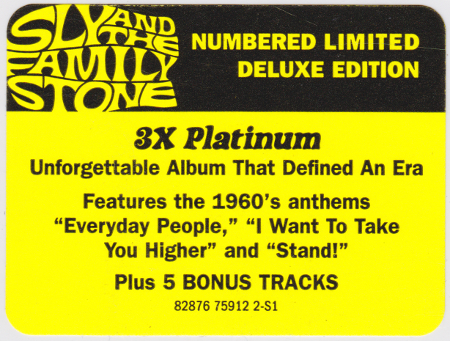
Sly and the Family Stone, Stand
Originally released 1969, reissued 2007 (Discogs) with five bonus tracks
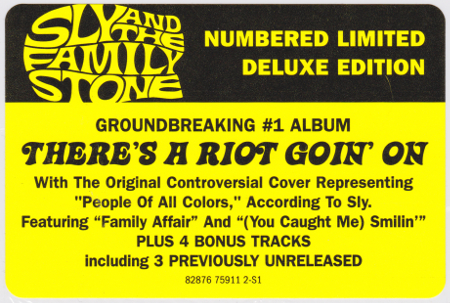
Sly and the Family Stone, There's a Riot Goin' On
Originally released 1971, reissued 2007 (Discogs) with four bonus tracks
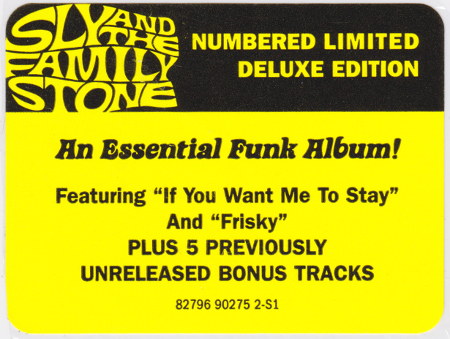
Sly and the Family Stone, Fresh
Originally released 1973, reissued 2007 (Discogs) with five bonus tracks
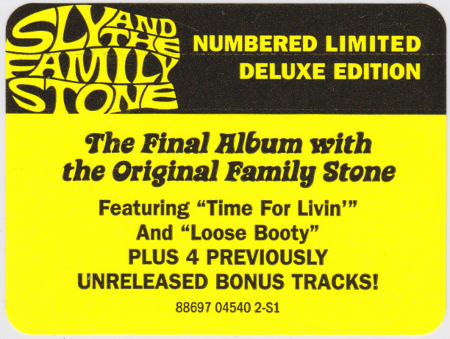
Sly and the Family Stone, Small Talk
Originally released 1974, reissued 2007 (Discogs) with four bonus tracks
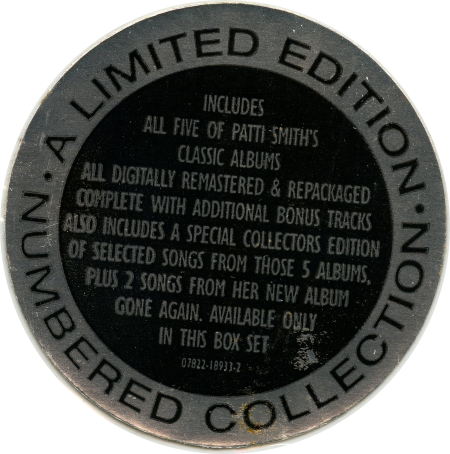


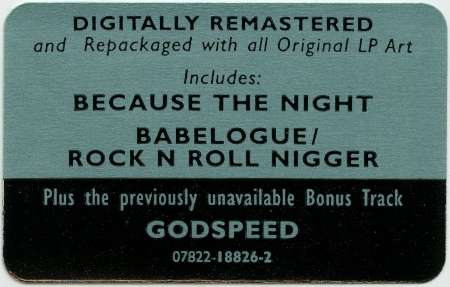
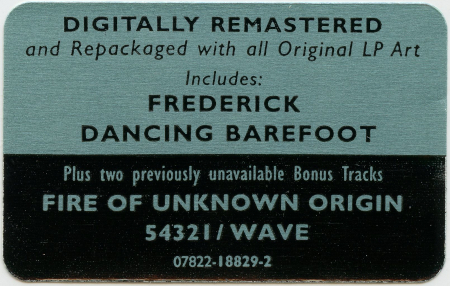
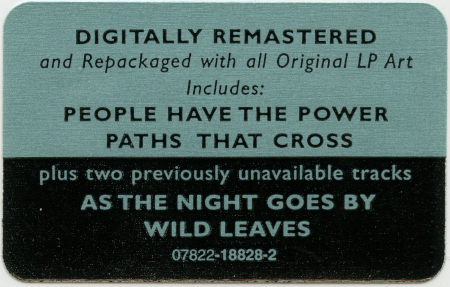
Patti Smith, The Patti Smith Masters: The Collective Works
Released 1996 (Discogs)
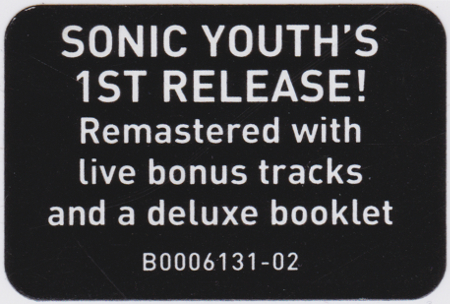
Sonic Youth, Sonic Youth
Originally released 1982, reissued 2006 (Discogs) with eight bonus tracks
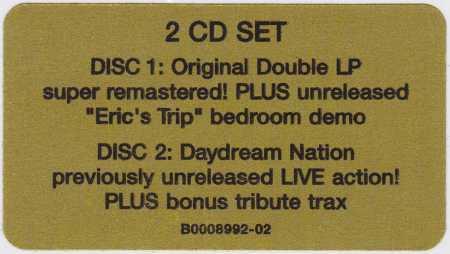
Sonic Youth, Daydream Nation
Originally released 1988, reissued 2007 (Discogs) with 20 bonus tracks
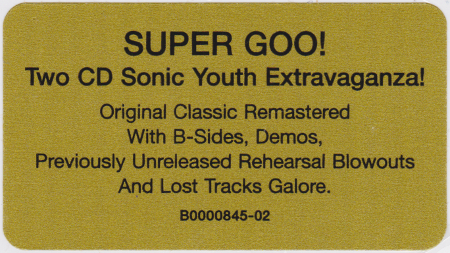
Sonic Youth, Goo
Originally released 1990, reissued 2005 (Discogs) with 20 bonus tracks
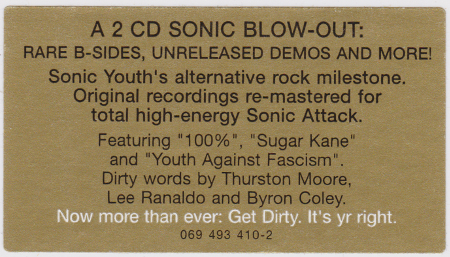
Sonic Youth, Dirty
Originally released 1992, reissued 2003 (Discogs) with 20 bonus tracks
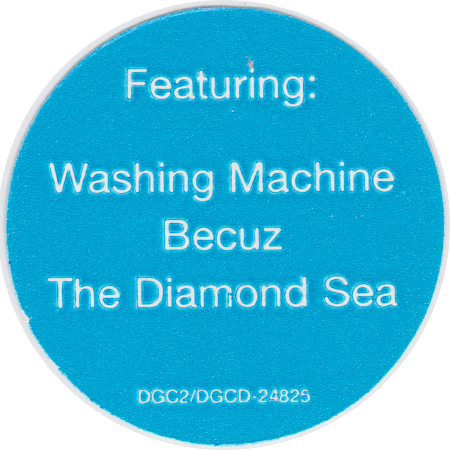
Sonic Youth, Washing Machine
Released 1995 (Discogs)
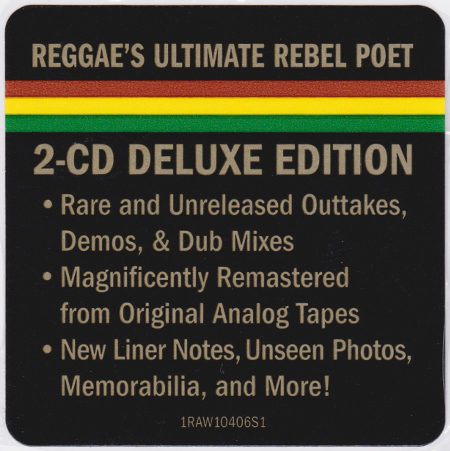
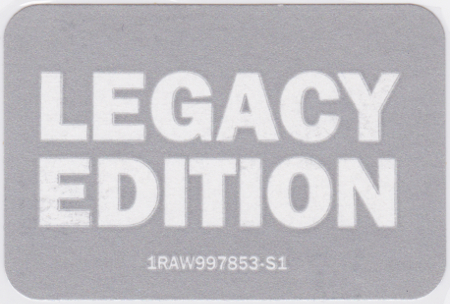
Peter Tosh, Legalize It
Originally released 1976, reissued 2011 (Discogs) with 23 bonus tracks
Peter Tosh, Equal Rights
Originally released 1977, reissued 2011 (Discogs) with 22 bonus tracks
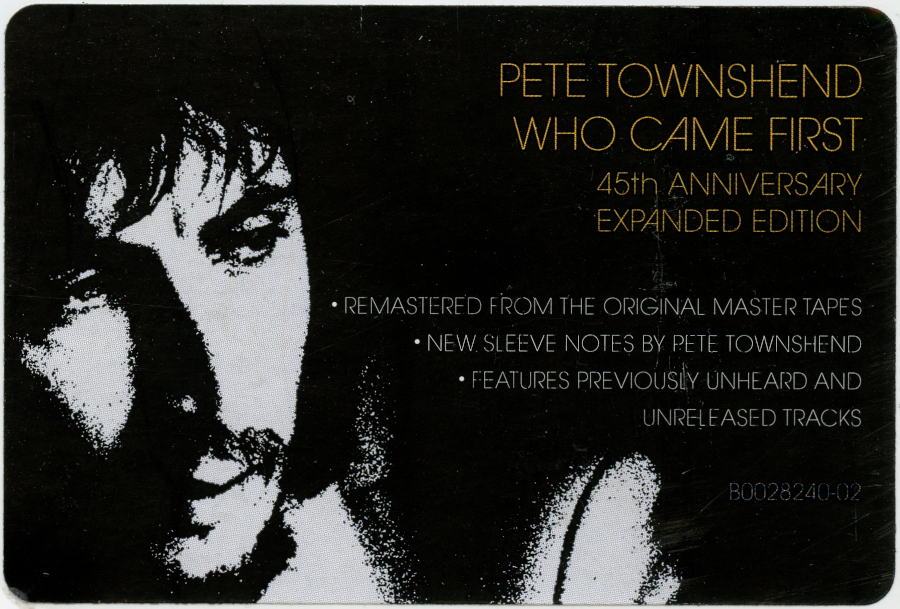
Pete Townshend, Who Came First
Originally released 1972, reissued 2018 (Discogs) with 17 bonus tracks
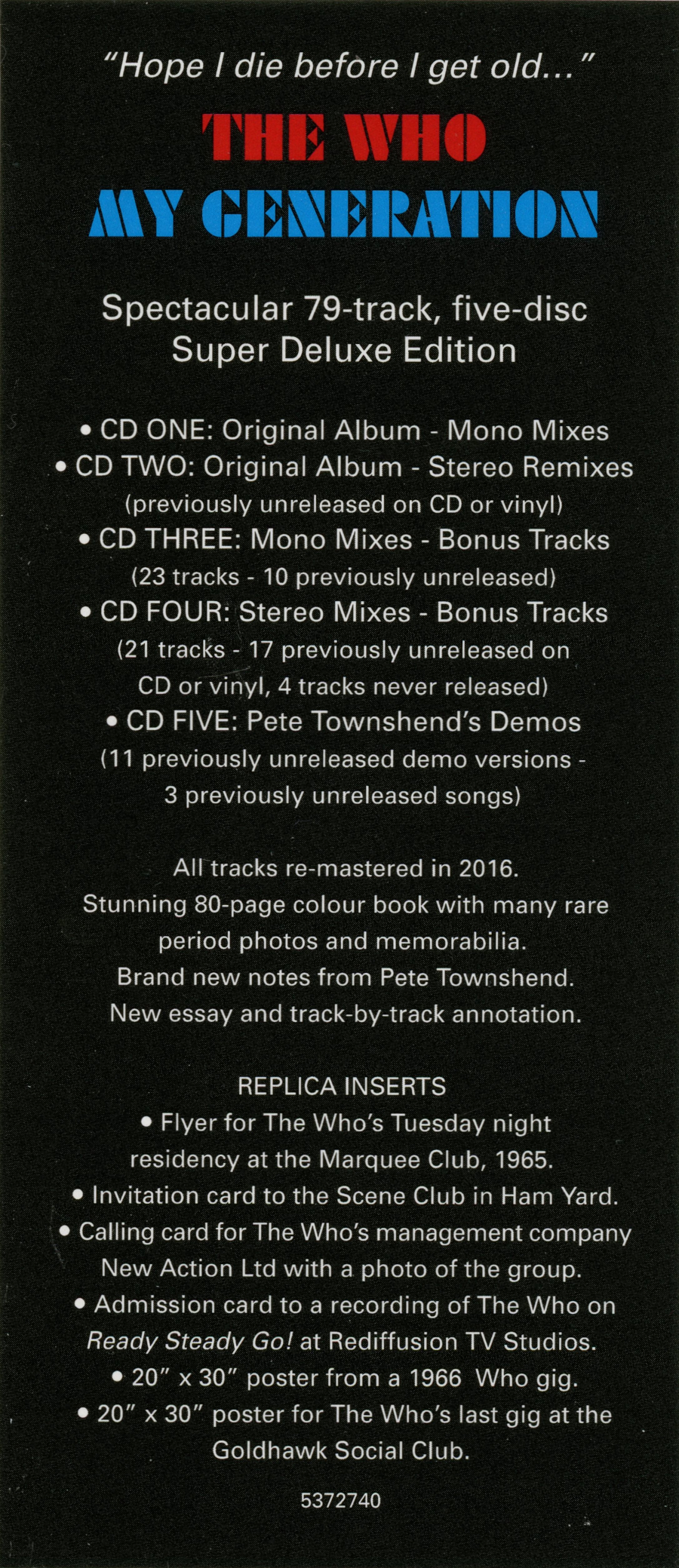
The Who, My Generation: Super Deluxe Edition
Originally released 1965, reissued 2016 (Discogs)
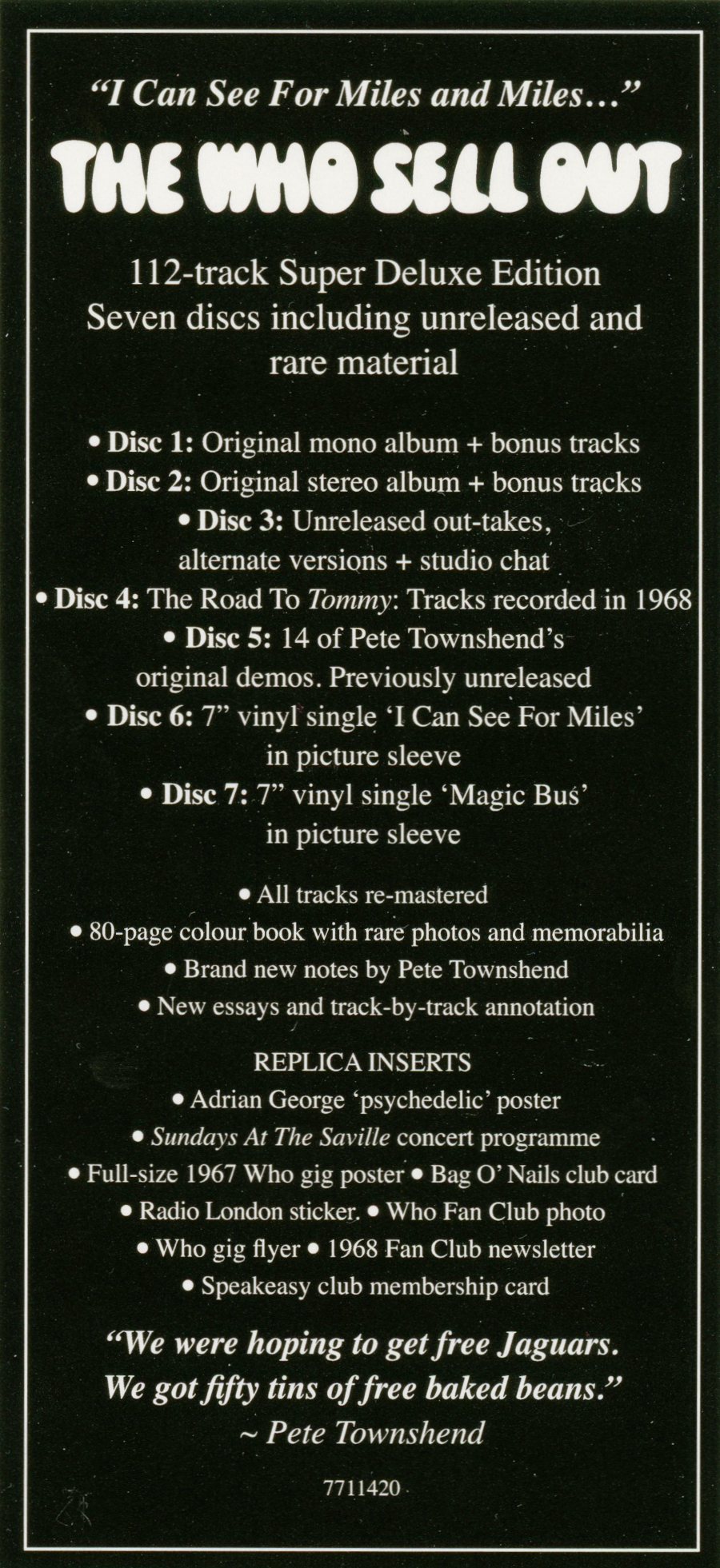
The Who, The Who Sell Out: Super Deluxe Edition
Originally released 1967, reissued 2021 (Discogs)
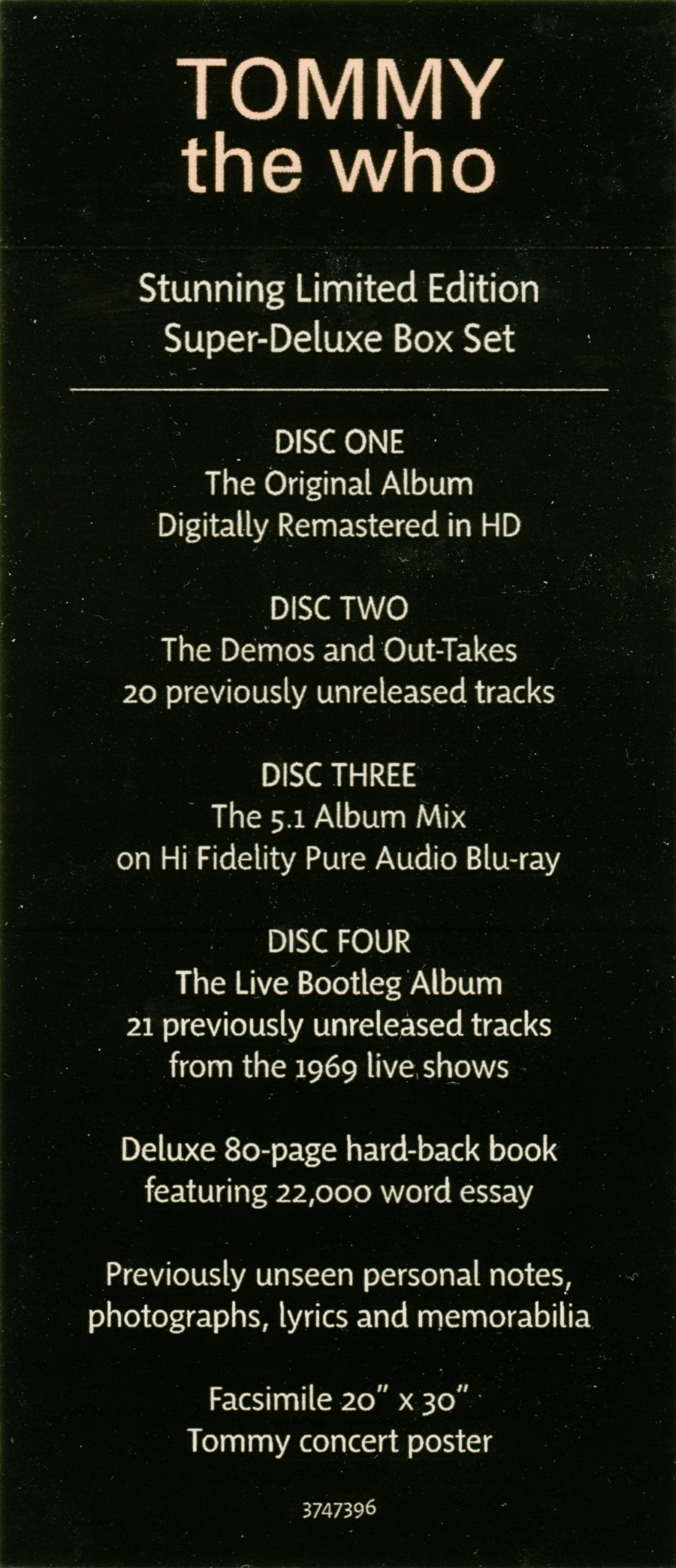
The Who, Tommy: Super-Deluxe Box Set
Originally released 1969, reissued 2013 (Discogs)
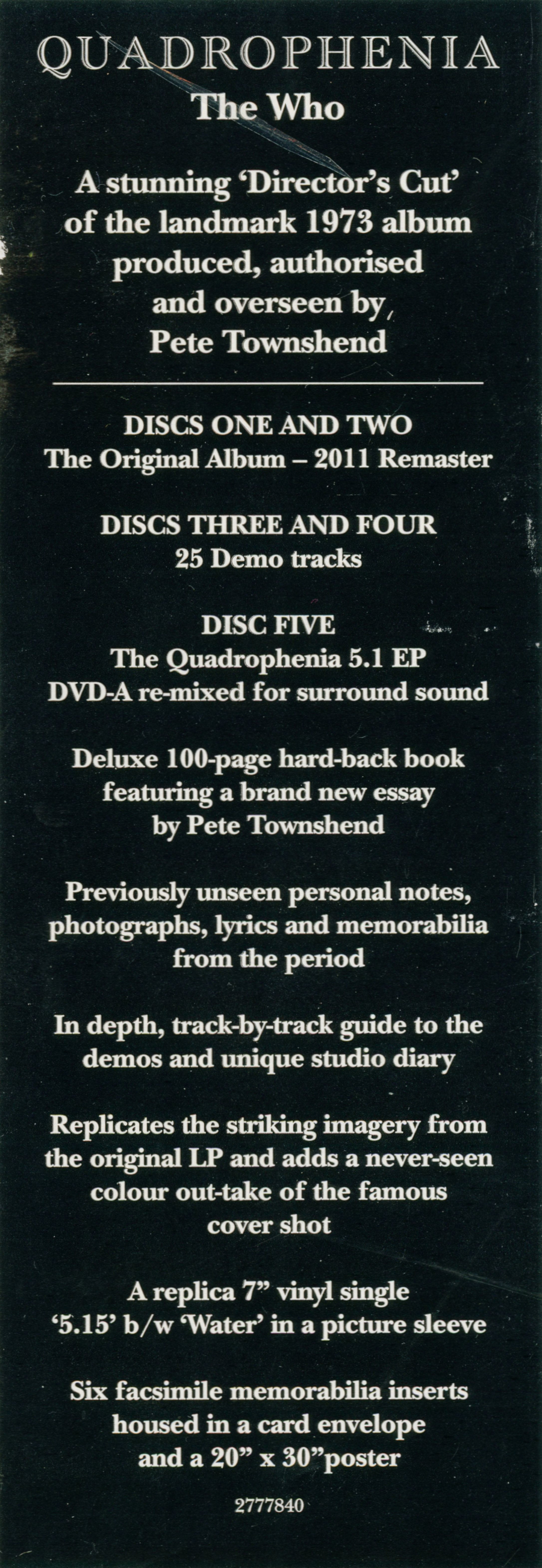
The Who, Quadrophenia: Director's Cut
Originally released 1973, reissued 2011 (Discogs)
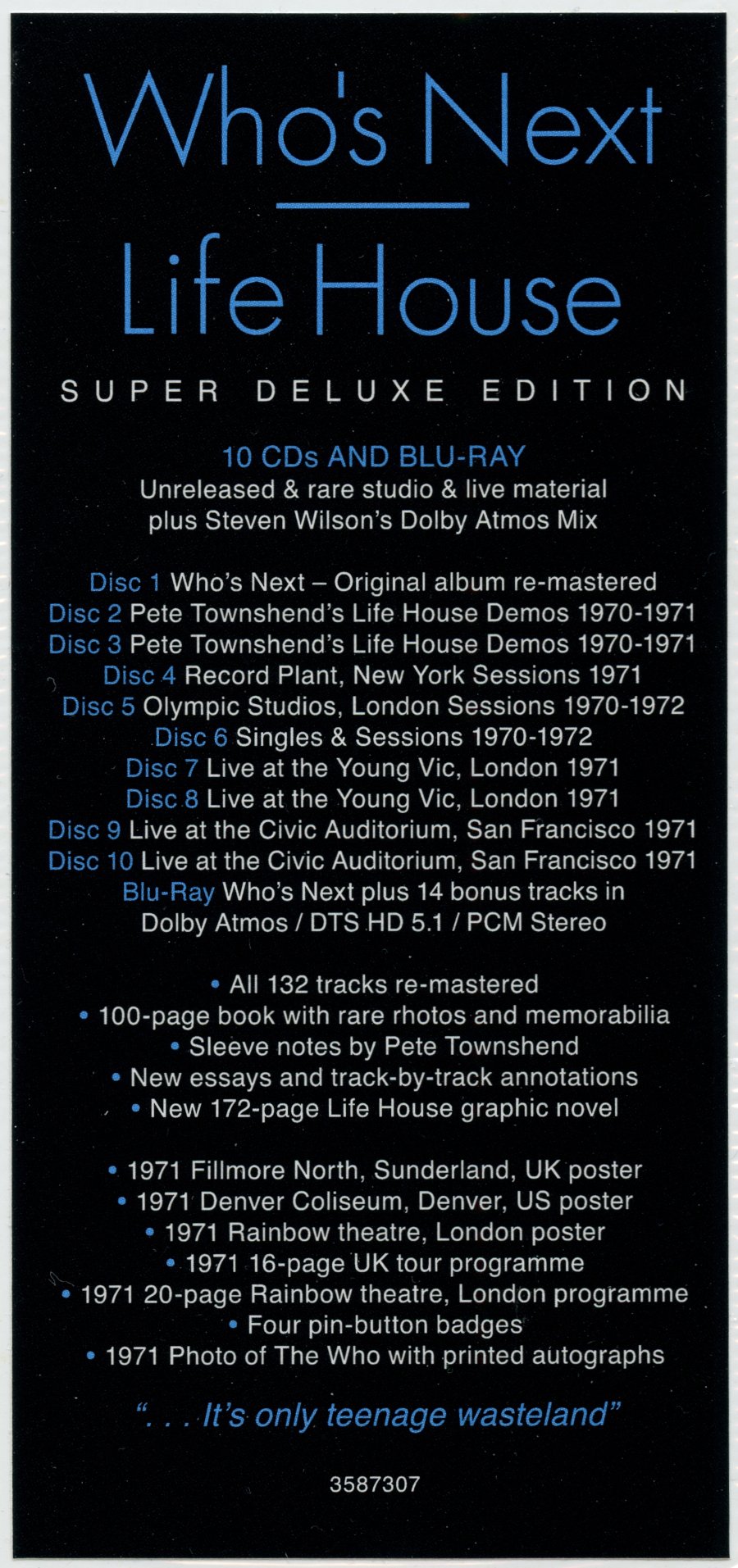
The Who, Who's Next/Life House
Released 2023 (Discogs)


Frank Zappa, The MOFO Project/Object: The Making of Freak Out! An FZ Audio Documentary
Released 2006 (Discogs)
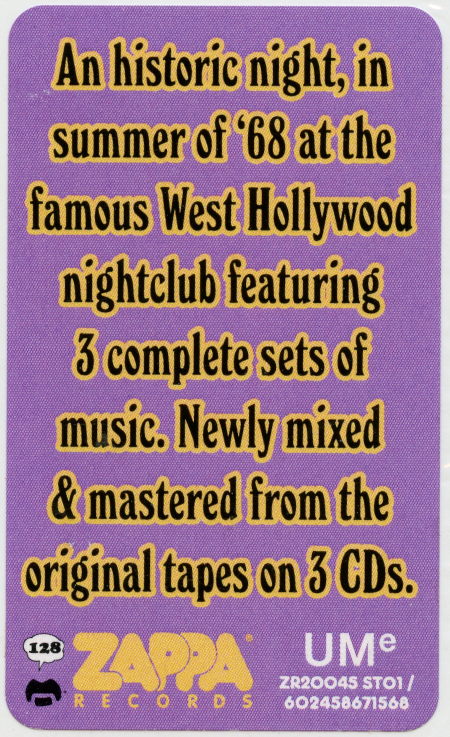
Frank Zappa and the Mothers of Invention, Whisky a Go Go, 1968
Released 2024 (Discogs)
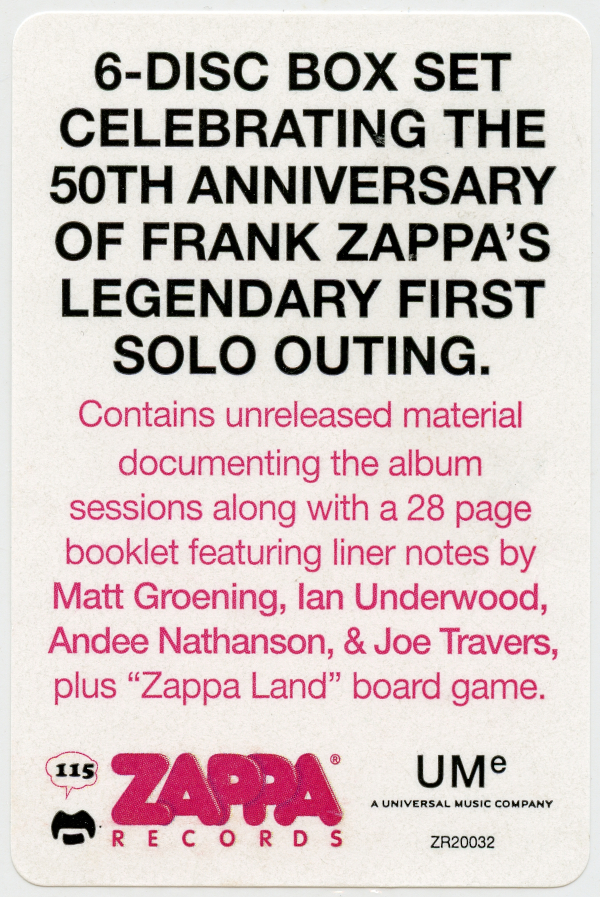
Frank Zappa, The Hot Rats Sessions
Released 2019 (Discogs)
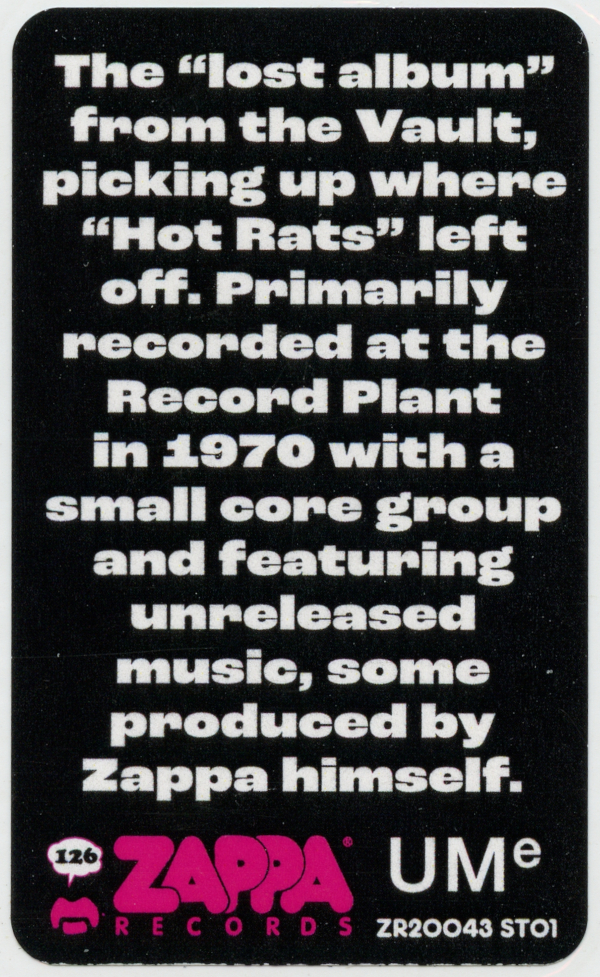
Frank Zappa, Funky Nothingness
Released 2023 (Discogs)
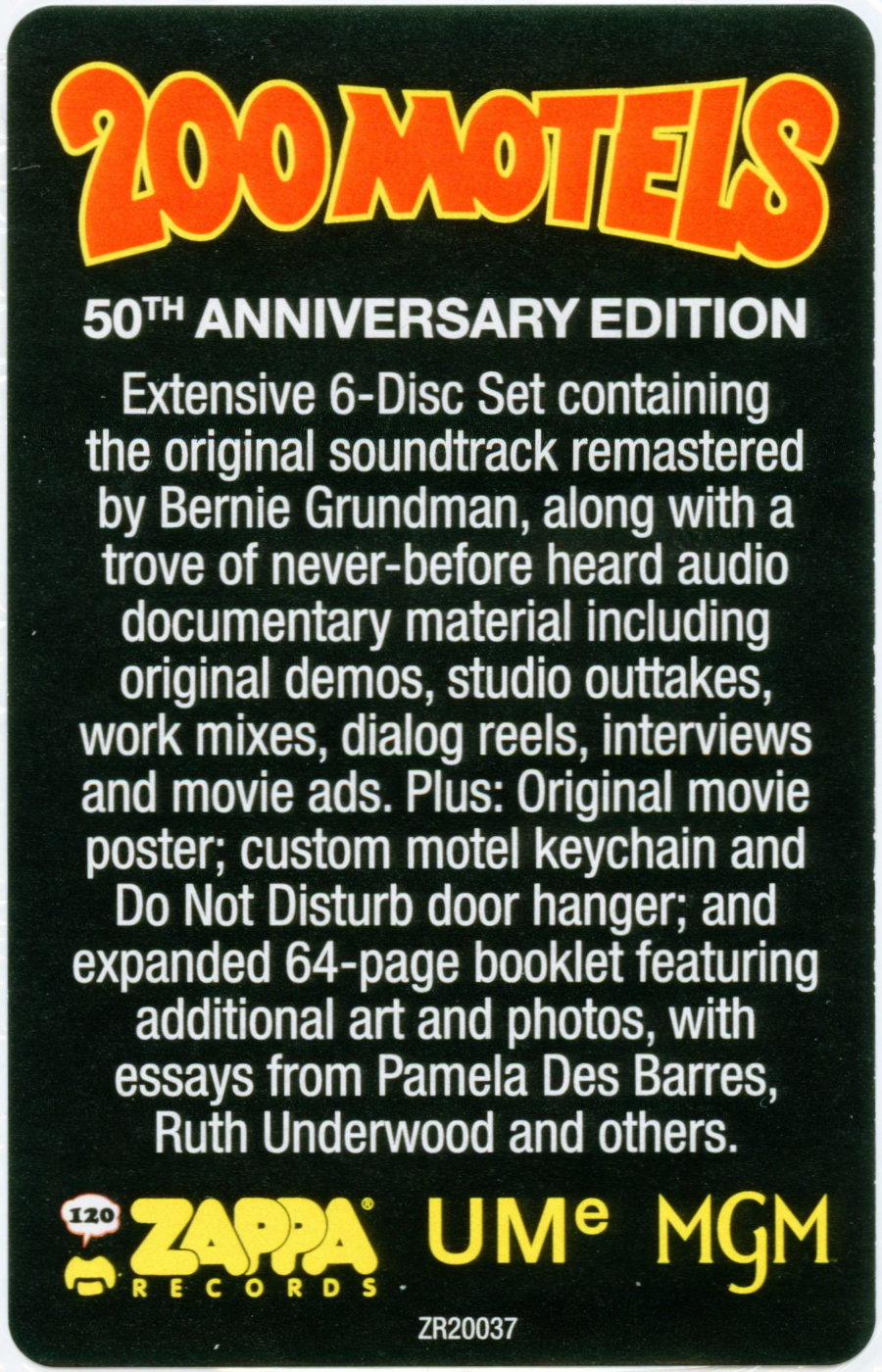
Frank Zappa, 200 Motels: 50th Anniversary Edition
Released 2021 (Discogs)

Frank Zappa, Waka/Wazoo
Released 2022 (Discogs)

Frank Zappa, Over-nite Sensation: 50th Anniversary Super Deluxe Edition
Released 2023 (Discogs)
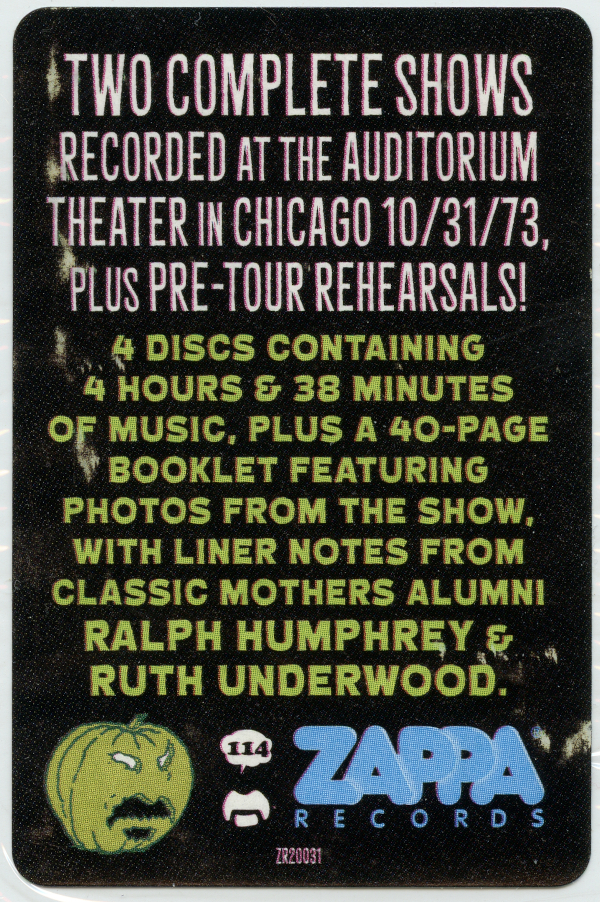
Frank Zappa, Halloween 73
Released 2021 (Discogs)

Frank Zappa, Zappa/Erie
Released 2022 (Discogs)

Frank Zappa, Orchestral Favorites: 40th Anniversary
Released 2019 (Discogs)
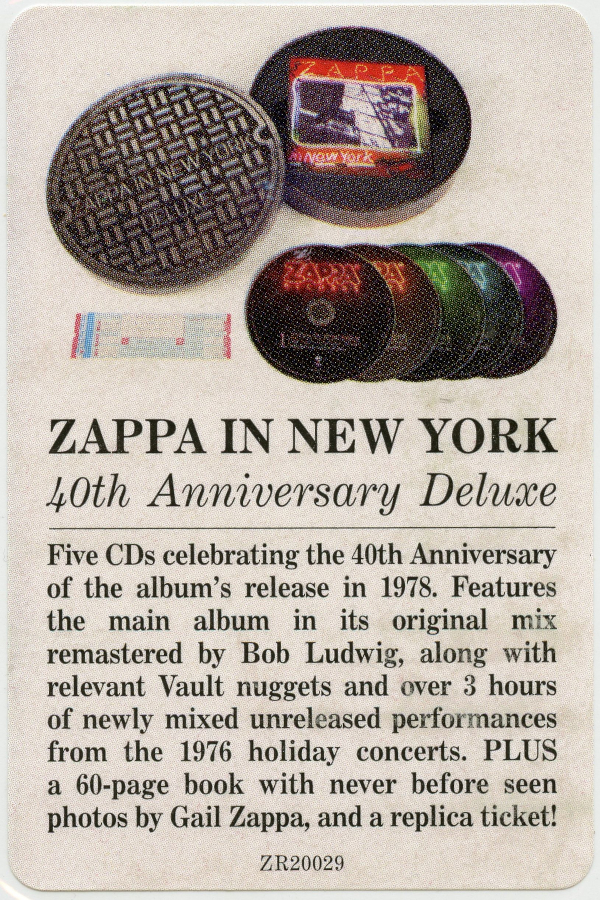
Frank Zappa, Zappa in New York: 40th Anniversary
Released 2019 (Discogs)
Impulse Records reissues:
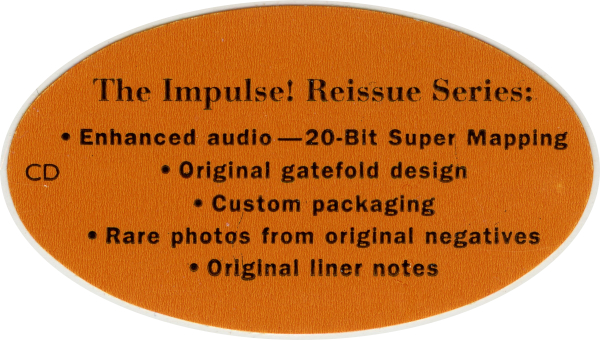
Generic hype sticker used for several of the reissues, including Oliver Nelson's Blues and the Abstract Truth, Charles Mingus's Mingus Mingus Mingus Mingus Mingus, John Coltrane's Ballads, and John Coltrane and Johnny Hartman
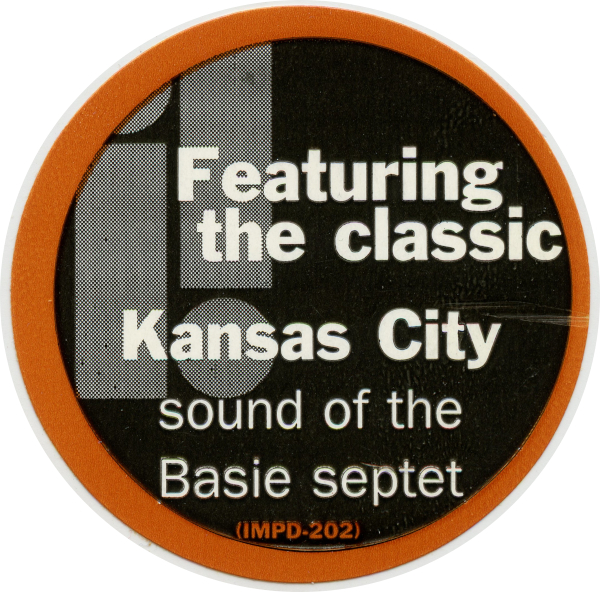
Count Basie, Count Basie and the Kansas City 7
Originally released 1962, reissued 1996 (Discogs)
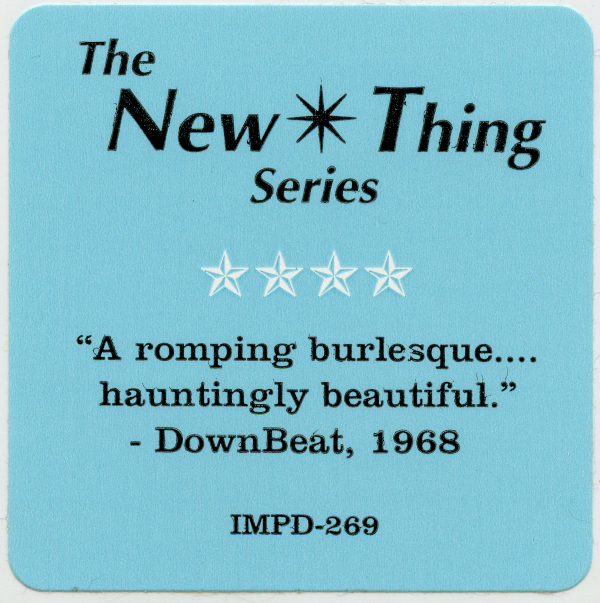
Marion Brown, Three for Shepp
Originally released 1967, reissued 1996 (Discogs)
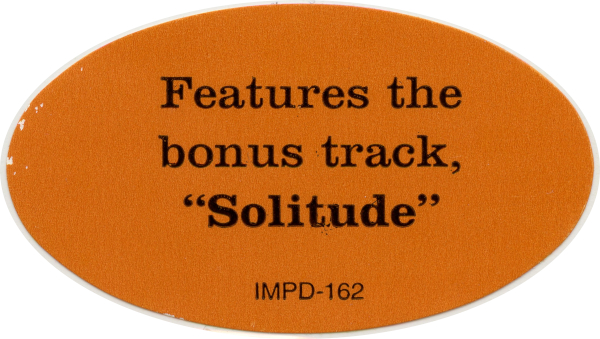
Duke Ellington, Duke Ellington Meets Coleman Hawkins
Originally released 1963, reissued 1995 (Discogs)
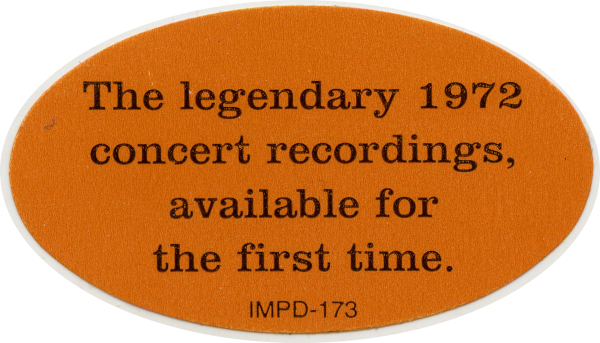
Duke Ellington, Live at the Whitney
Released 1995 (Discogs)

Keith Jarrett, Fort Yawuh
Originally released 1973, reissued 1999 (Discogs)
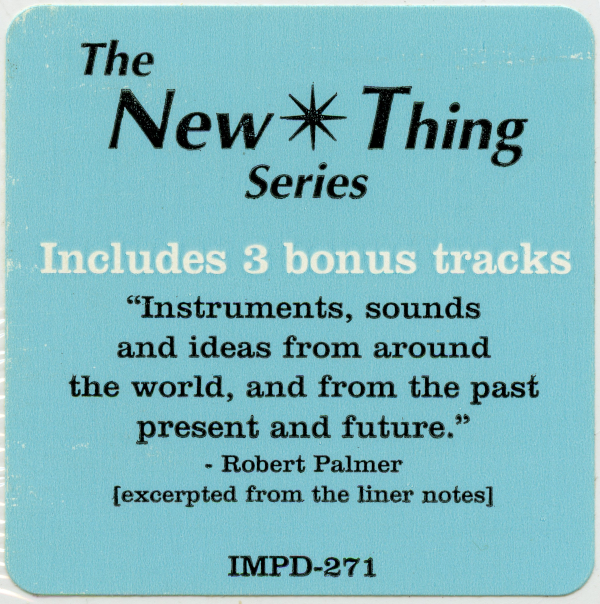
Dewey Redman, Ear of the Behearer
Originally released 1973, reissued 1998 (Discogs)
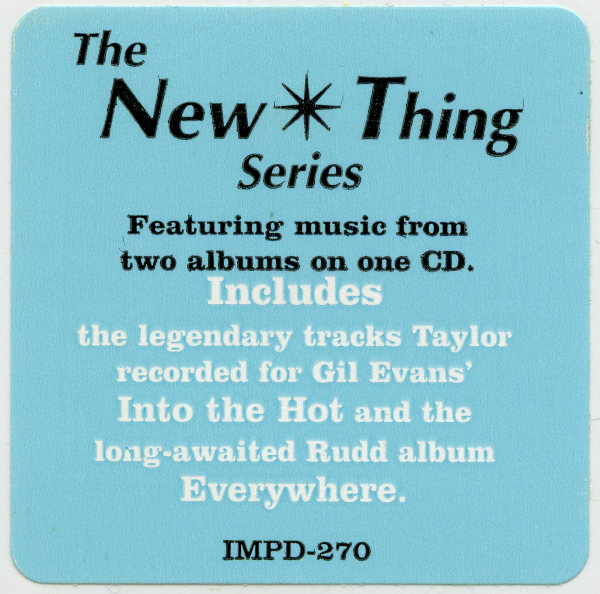
The Cecil Taylor Unit// The Roswell Rudd Sextet, Mixed
Released 1998 (Discogs); split release: reissue of Rudd's Everywhere, originally released 1967, and the three tracks from the album Into the Hot, originally released 1962, that featured Taylor's Unit (the remainder of that album featured John Carisi; the album being credited to the Gil Evans Orchestra but not actually featuring them)
Verve Master Edition reissues (besides Fitzgerald titles above):
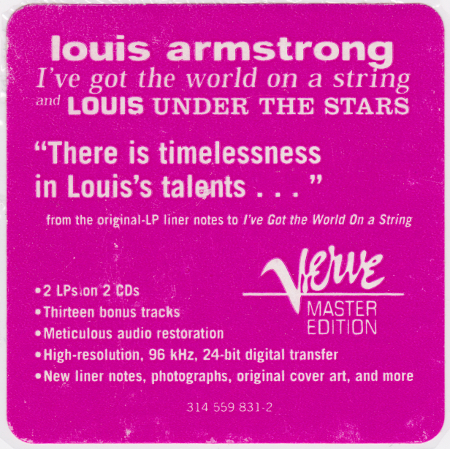
Louis Armstrong, I've Got the World on a String and Louis under the Stars
I've Got the World on a String originally released 1960; Louis under the Stars originally released 1958; reissued 1999 (Discogs) with eight and six bonus tracks, respectively
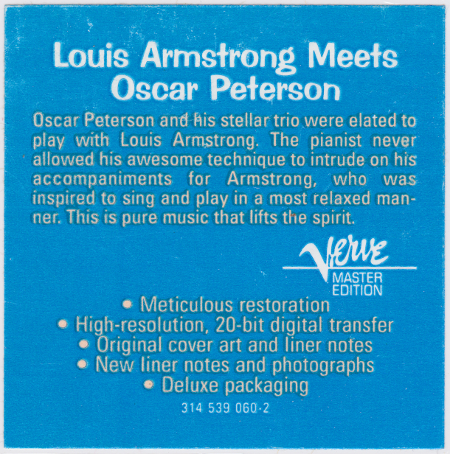
Louis Armstrong/ Oscar Peterson, Louis Armstrong Meets Oscar Peterson
Originally released 1959, reissued 1997 (Discogs) with four bonus tracks
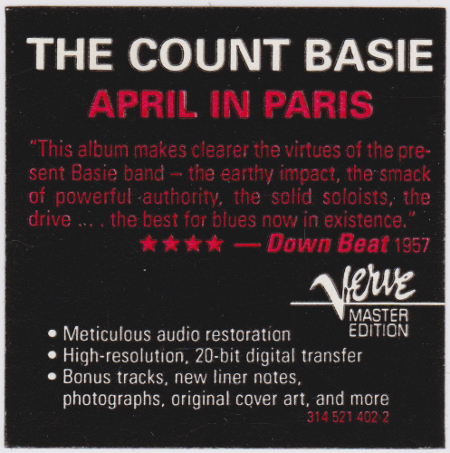
Count Basie and His Orchestra, April in Paris
Originally released 1956, reissued 1997 Discogs) with six bonus tracks
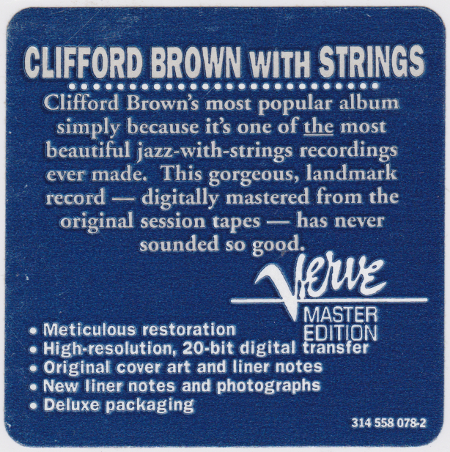
Clifford Brown with Strings
Originally release 1955, reissued 1998 (Discogs)
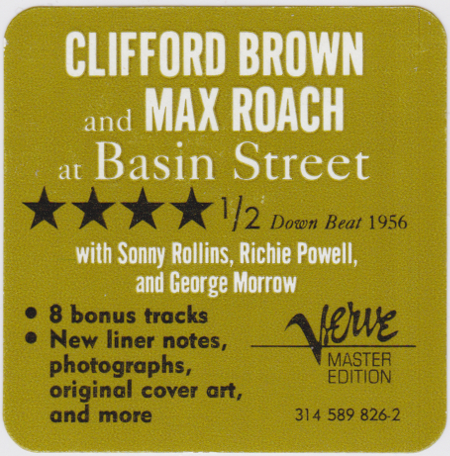
Clifford Brown and Max Roach at Basin Street
Originally released 1956, reissued 2002 (Discogs) with eight bonus tracks
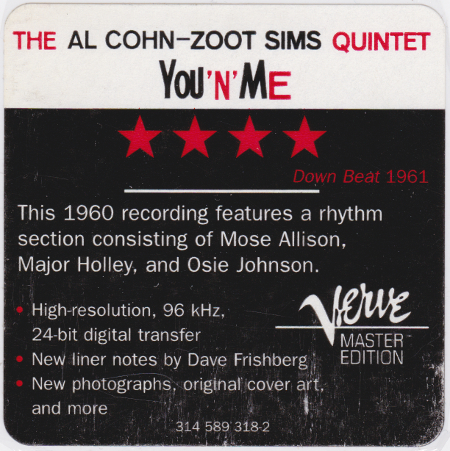
The Al Cohn-Zoot Sims Quintet, You 'n Me
Originally released 1960, reissued 2002 (Discogs)
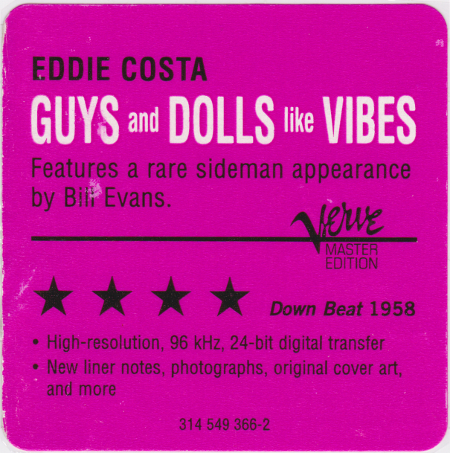
The Eddie Costa Quartet, Guys and Dolls Like Vibes
Originally released 1958, reissued 2001 (Discogs)
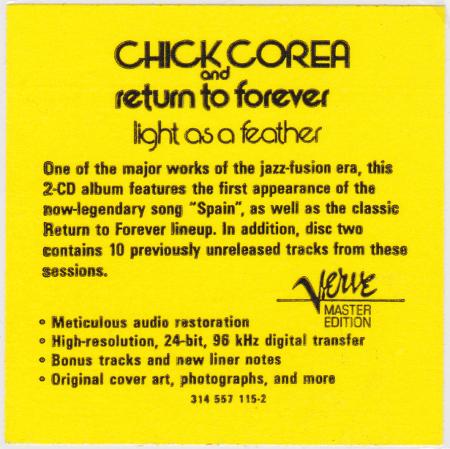
Chick Corea and Return to Forever, Light as a Feather
Originally released 1973, reissued 1998 (Discogs) with 10 bonus tracks
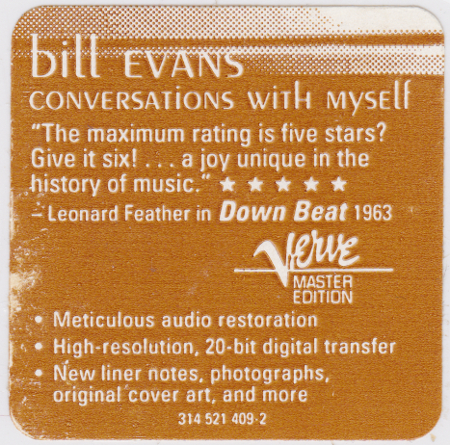
Bill Evans, Conversations with Myself
Originally released 1963, reissued 1997 (Discogs) with two bonus tracks

Stan Getz, Award Winner
Originally released 1959, reissued 2000 (Discogs) with nine bonus tracks
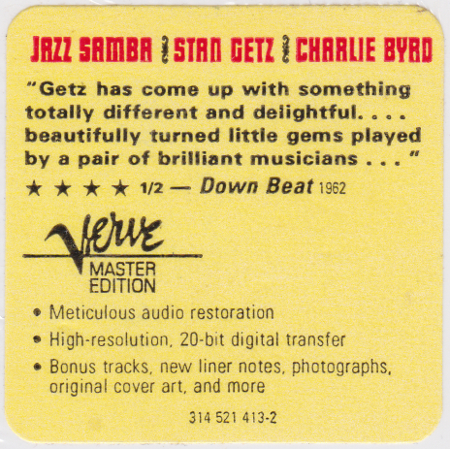
Stan Getz, Jazz Samba
Originally released 1962, reissued 1997 (Discogs) with six bonus tracks
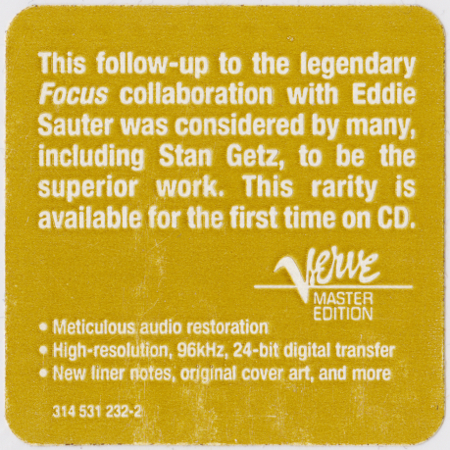
Stan Getz, Mickey One
Originally released 1965, reissued 1998 (Discogs) with nine bonus tracks
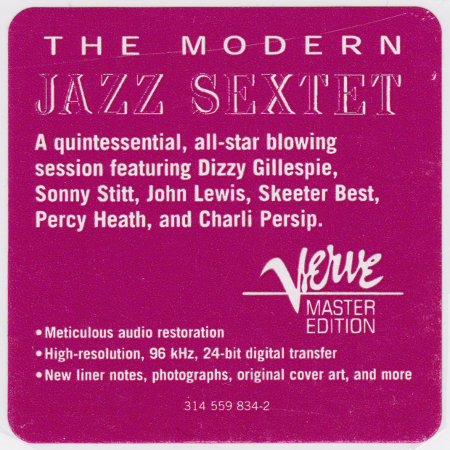
The Modern Jazz Sextet
Originally released 1956, reissued 1999 (Discogs)
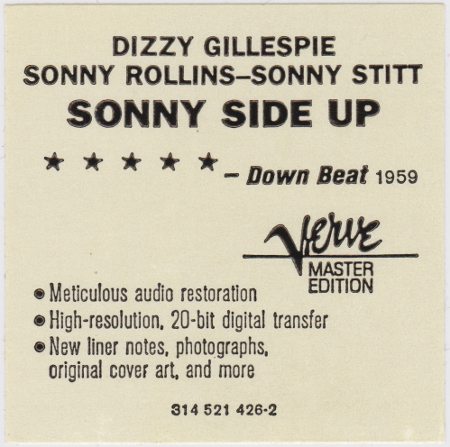
Dizzy Gillespie/ Sonny Stitt/ Sonny Rollins, Sonny Side Up
Originally released 1959, reissued 1997 (Discogs)
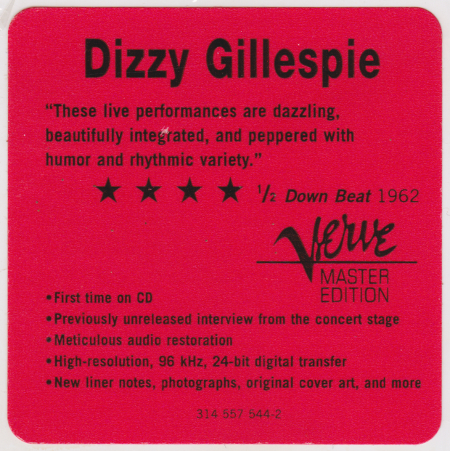
The Dizzy Gillespie Quintet, An Electrifying Evening with the Dizzy Gillespie Quintet
Originally released 1961, reissued 1999 (Discogs)
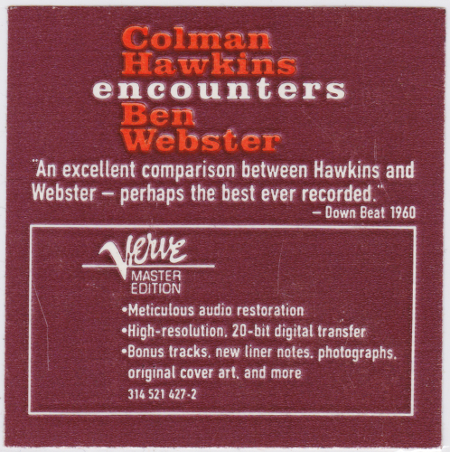
Coleman Hawkins/ Ben Webster, Coleman Hawkins Encounters Ben Webster
Originally released 1959, reissued 1997 (Discogs)
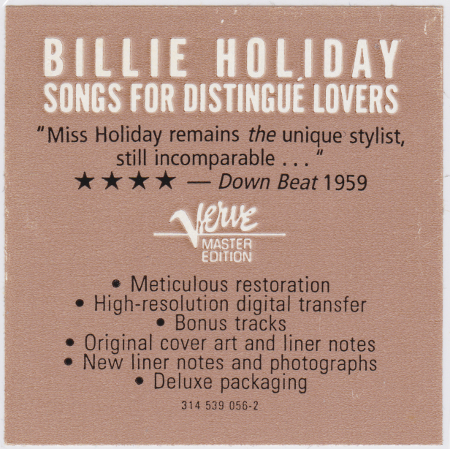
Billie Holiday, Songs for Distingué Lovers
Originally released 1958, reissued Discogs with six bonus tracks

Roland Kirk, Domino
Originally released 1962, reissued 2000 (Discogs) with 15 bonus tracks
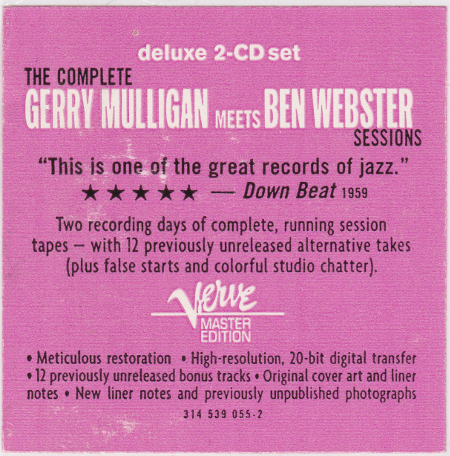
Gerry Mulligan/ Ben Webster, The Complete Gerry Mulligan Meets Ben Webster Sessions
Gerry Mulligan Meets Ben Webster originally released 1960; this reissue, 1997 (Discogs) with 20 bonus tracks

Charlie Parker/ Dizzy Gillespie, Bird and Diz
Released 1997 (Discogs)
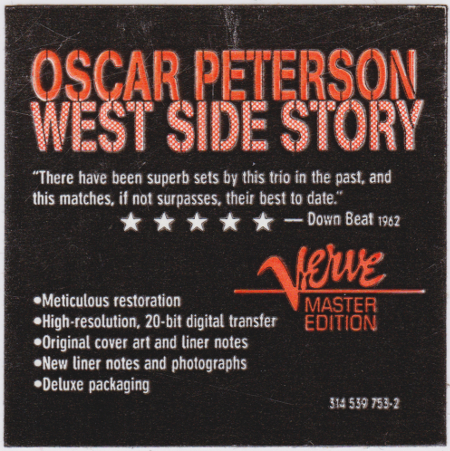
The Oscar Peterson Trio, West Side Story
Originally released 1962, reissued 1998 (Discogs)
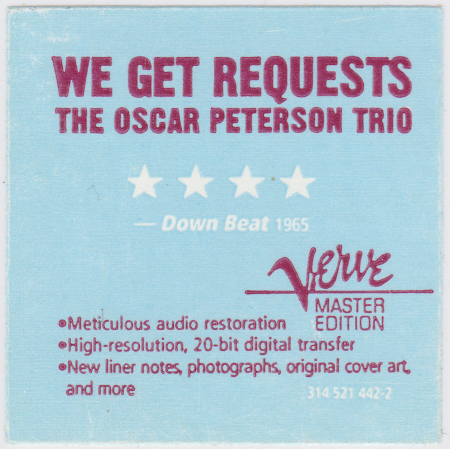
The Oscar Peterson Trio, We Get Requests
Originally 1964, reissued 1997 (Discogs)

Tony Scott, Music for Zen Meditation and Other Joys
Originally released 1965, reissued 1997 (Discogs)
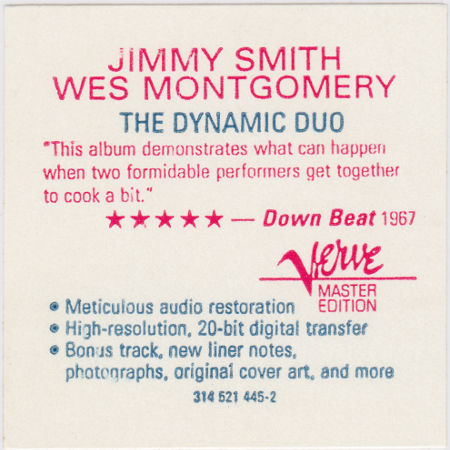
Jimmy Smith/ Wes Montgomery, Jimmy and Wes the Dynamic Duo
Originally released 1966, reissued 1997 (Discogs)
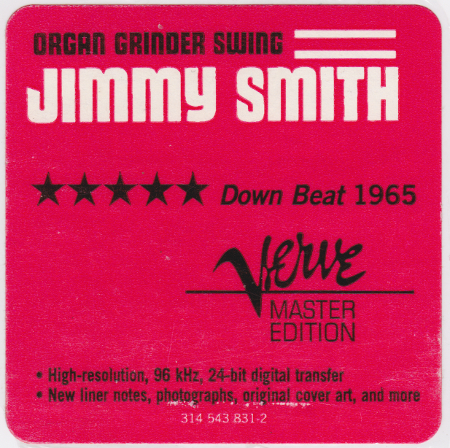
The Incredible Jimmy Smith Featuring Kenny Burrell and Grady Tate, Organ Grinder Swing
Originally released 1965, reissued 2000 (Discogs)
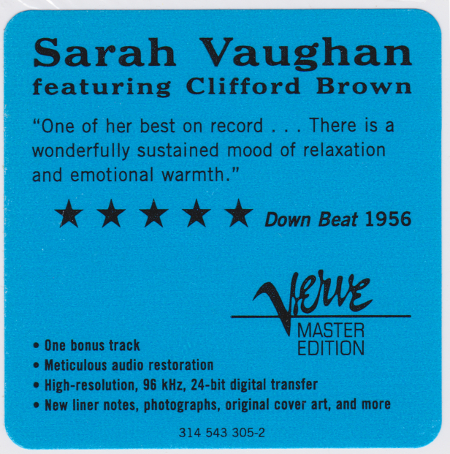
Sarah Vaughan
Originally released 1955, reissued 2000 (Discogs) with one bonus track
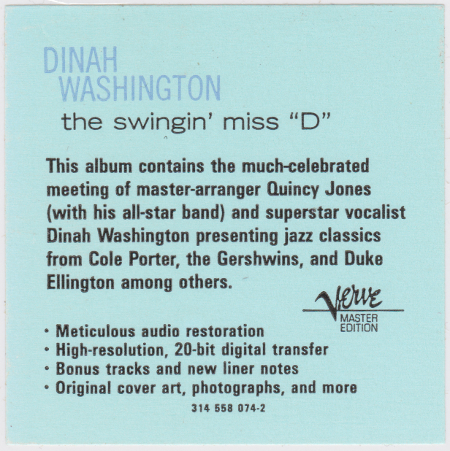
Dinah Washington/ Quincy Jones and His Orchestra, The Swingin' Miss "D"
Originally released 1957, reissued 1998 (Discogs)
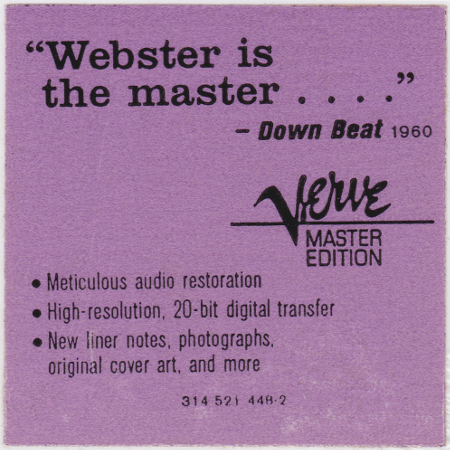
Ben Webster/ Oscar Peterson, Ben Webster Meets Oscar Peterson
Originally released 1959, reissued 1997 (Discogs)
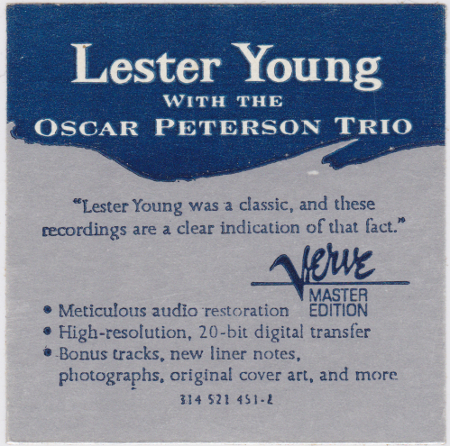
Lester Young/ Oscar Peterson, Lester Young with the Oscar Peterson Trio
The President Plays with the Oscar Peterson Trio originally released 1956; this reissue, 1997 (Discogs) with six bonus tracks

Lester Young, Roy Eldridge and Harry Edison, Laughin' to Keep From Cryin'
Originally released 1958, reissued 2000 (Discogs) with two bonus tracks
Concord Music Group reissue series:
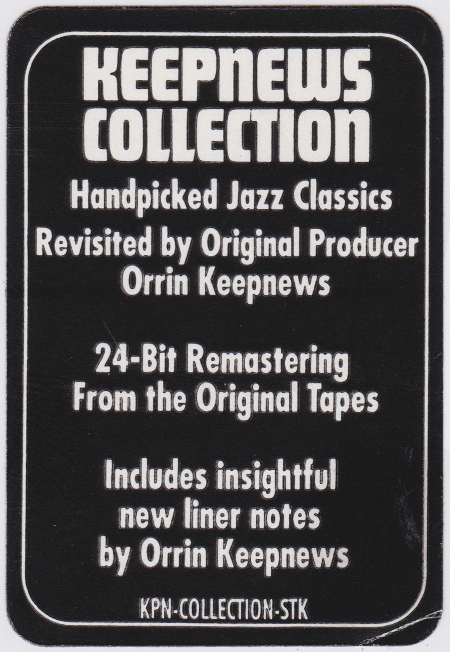
Keepnews Collection series (Discogs)

R. V. G. Remasters series (Discogs)
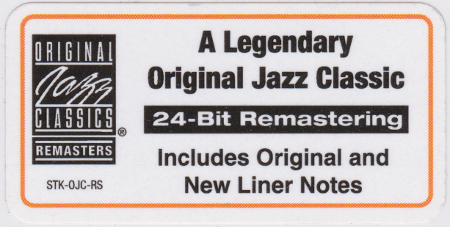
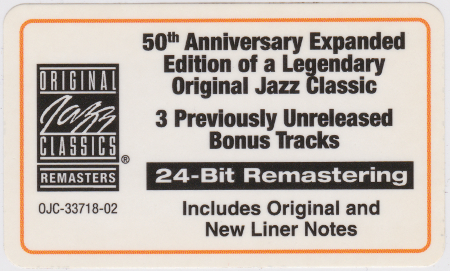

new versions of Original Jazz Classics (Discogs) e. g., series sticker; unique stickers for The Bill Evans Trio, Moonbeams; and Ella Fitzgerald/ Joe Pass, Easy Living, respectively
Miscellaneous reissue series and compilations:

Black Lion Essential Reissue Series (Discogs)
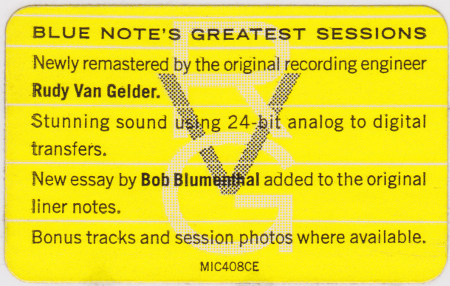
Blue Note Rudy Van Gelder Edition reissues (Discogs)
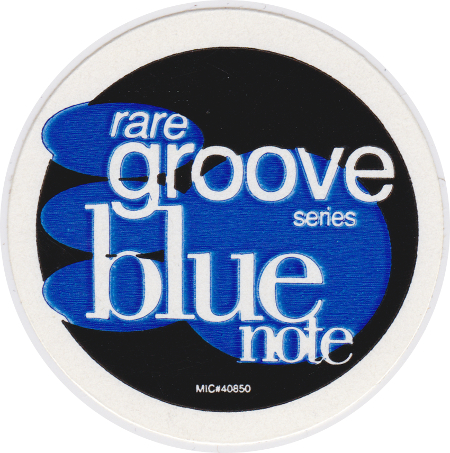
Blue Note Rare Groove reissues (Discogs)
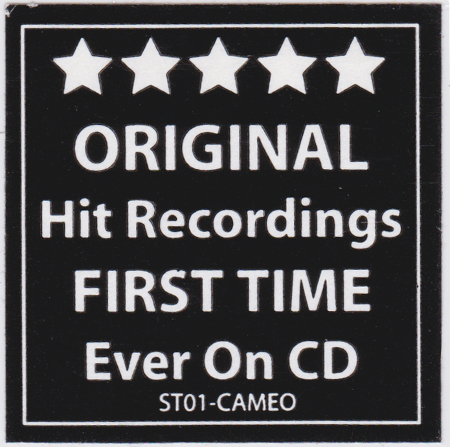
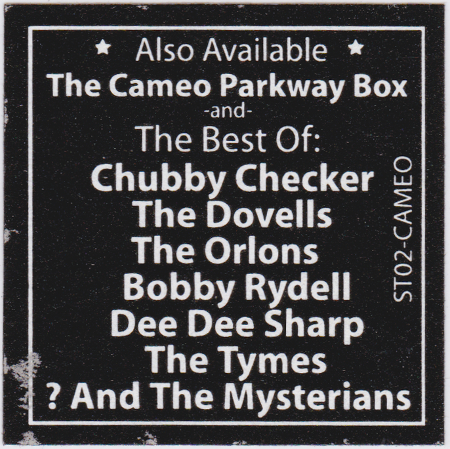
Cameo-Parkway reissues (Discogs)

E. C. M. Touchstones reissue series (Discogs)

Essential Jazz Classics label (Discogs)
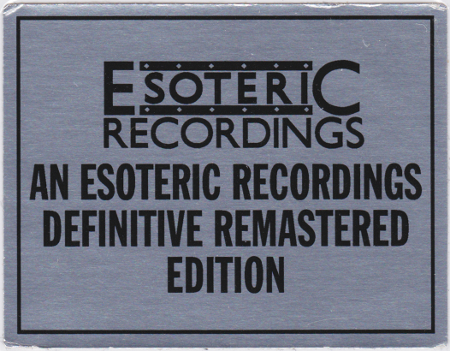
Esoteric label (Discogs)
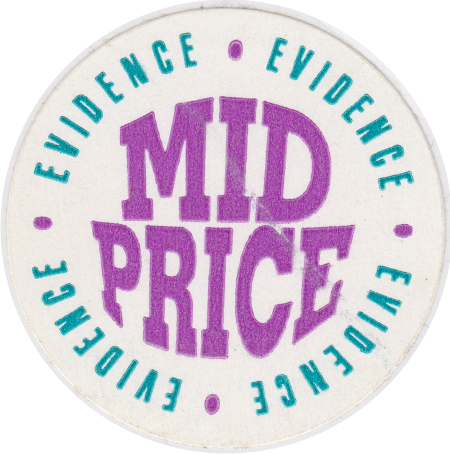
Evidence Records
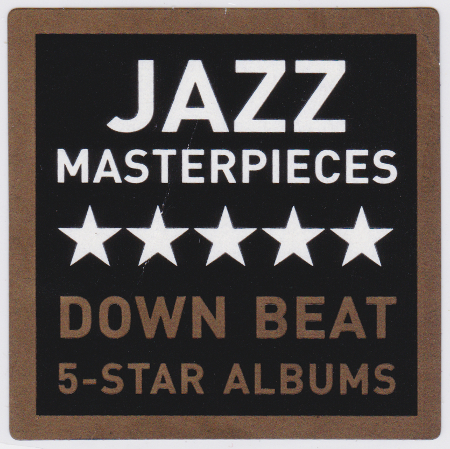
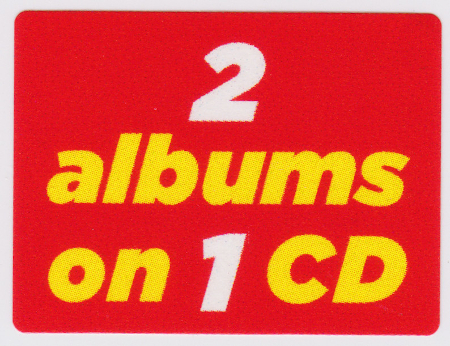
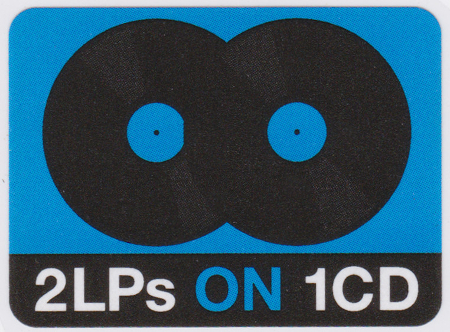
Poll Winners label (Discogs)

Rhino Handmade series (Discogs)
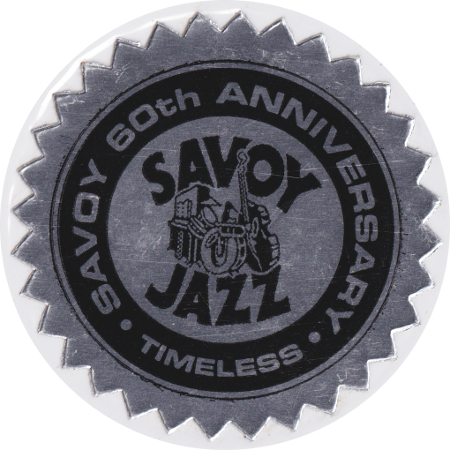
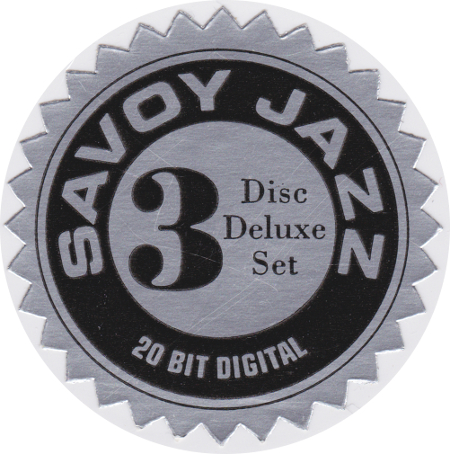
Savoy reissues, e. g. Dizzy Gillespie, two versions of Odyssey (standard and deluxe)
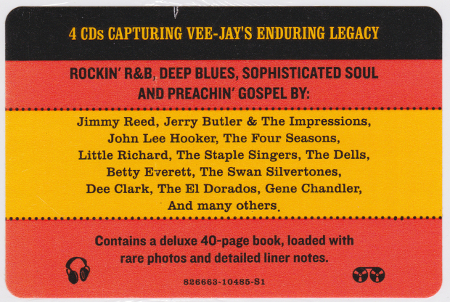
Vee-Jay: The Definitive Collection (Discogs)

Verve Originals series (Discogs)
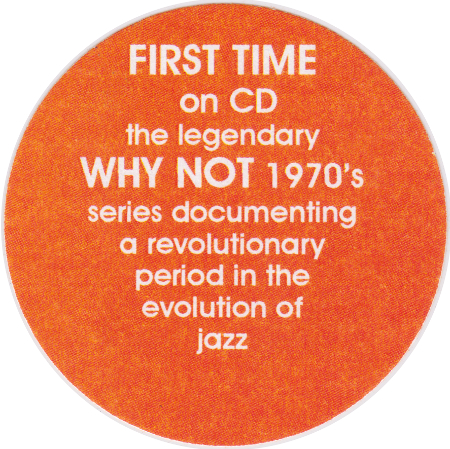
Why Not reissues, e. g., Chico Freeman, Morning Prayer